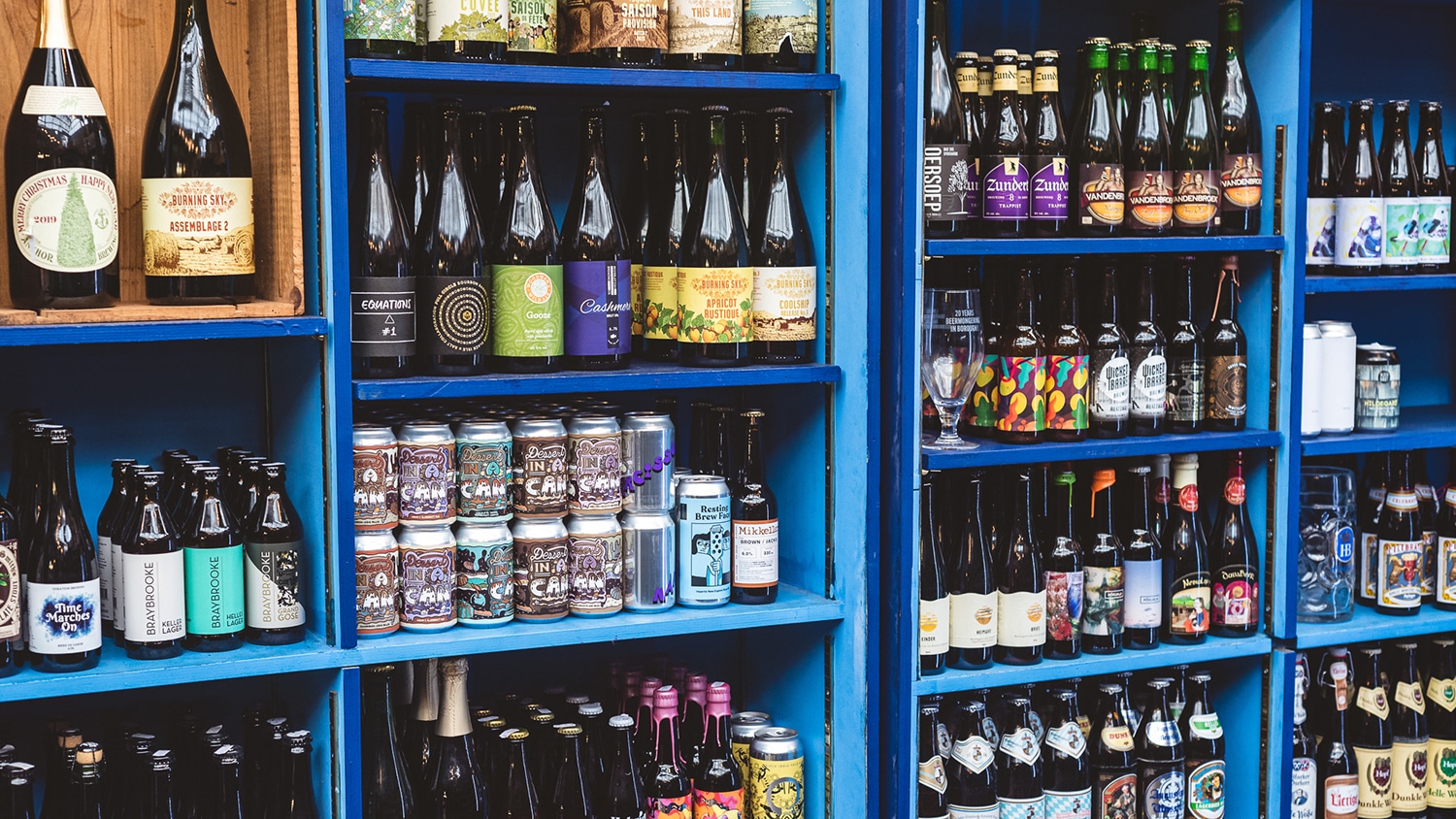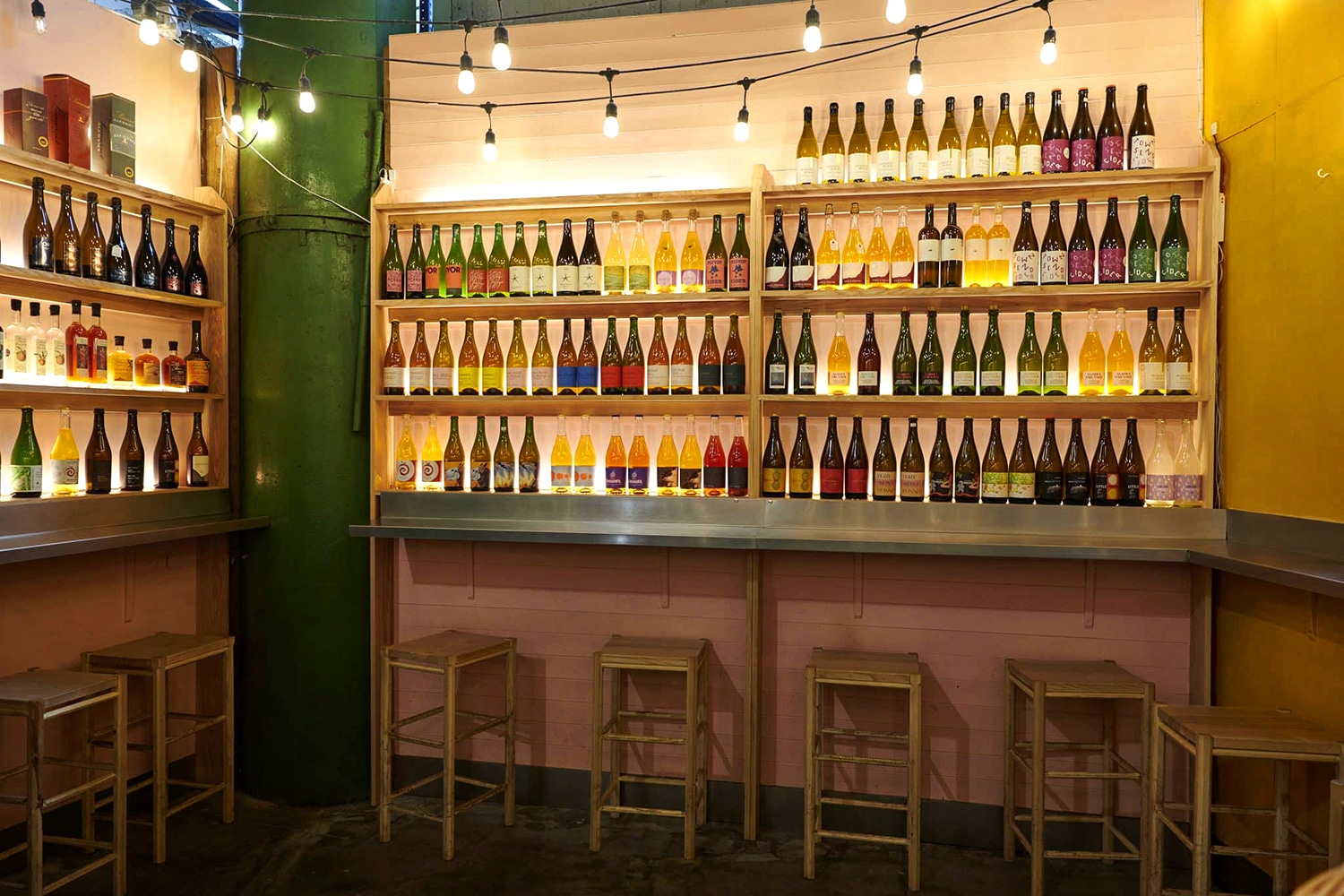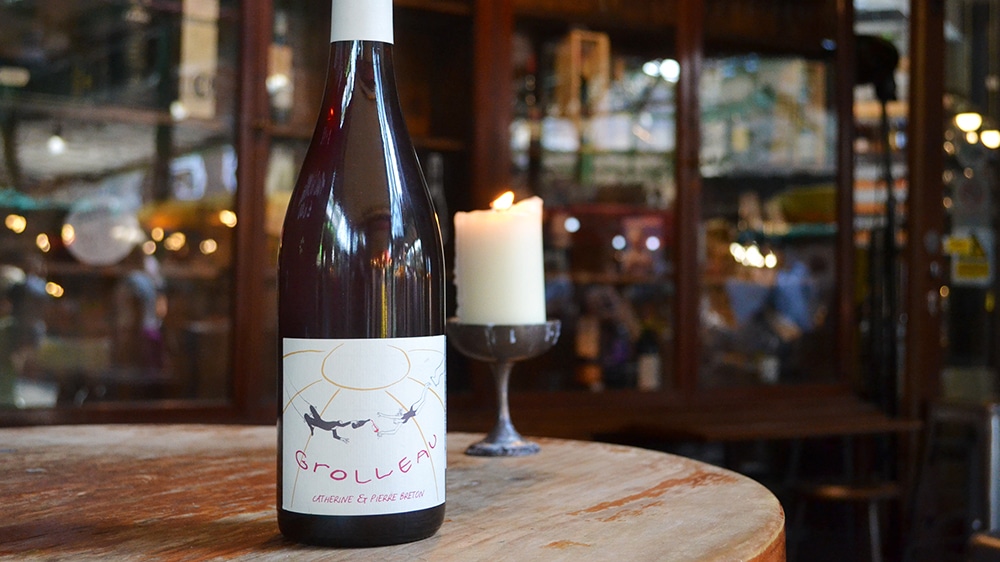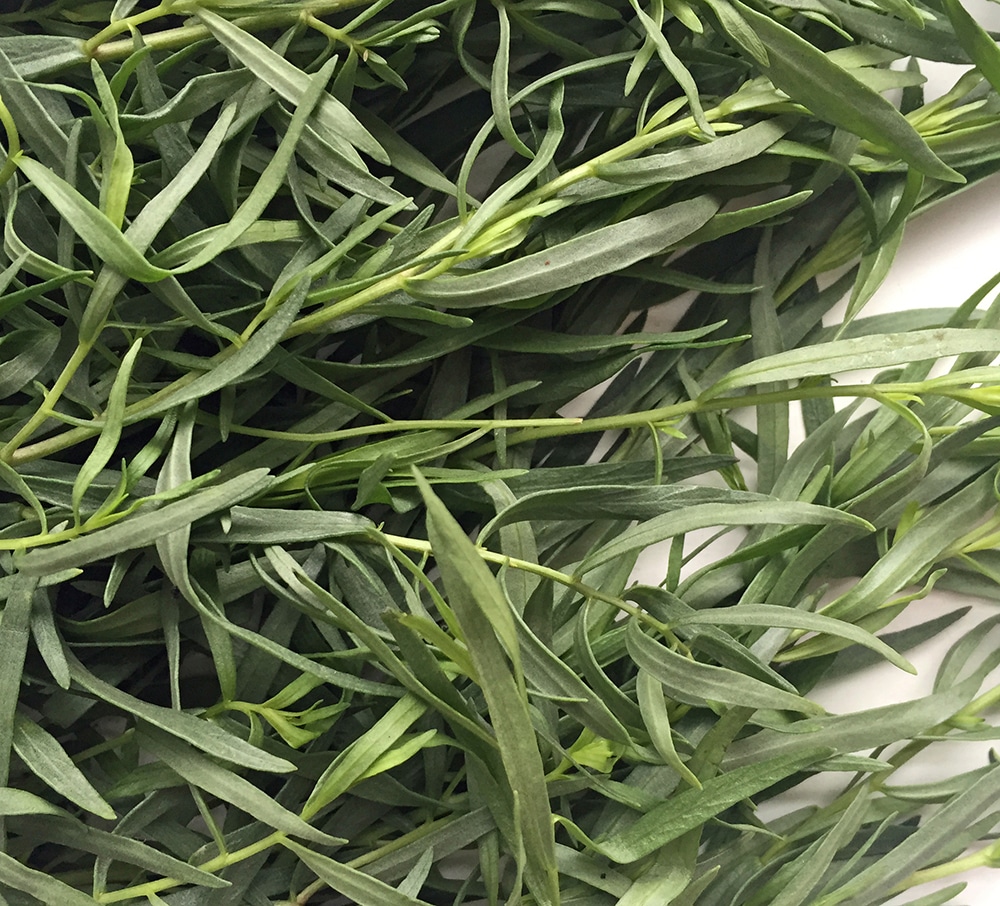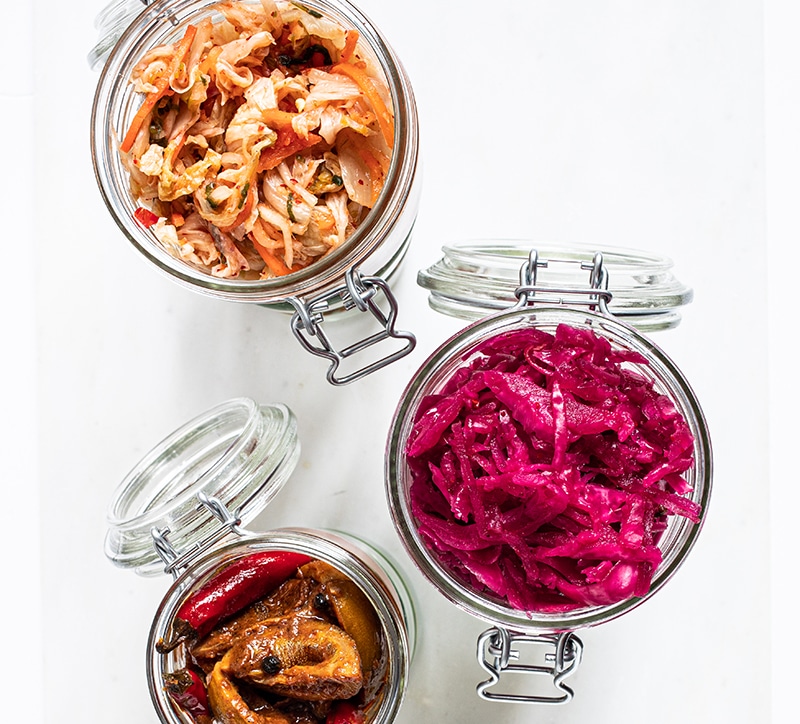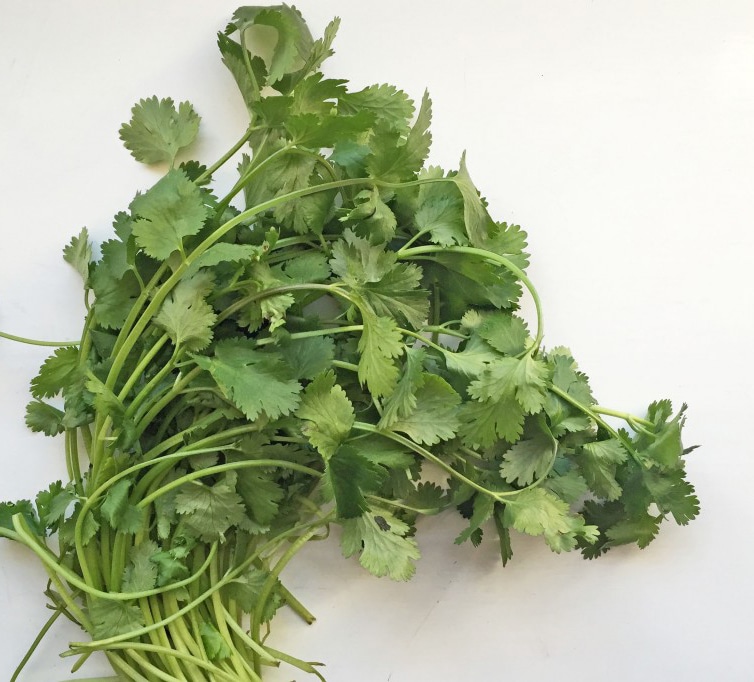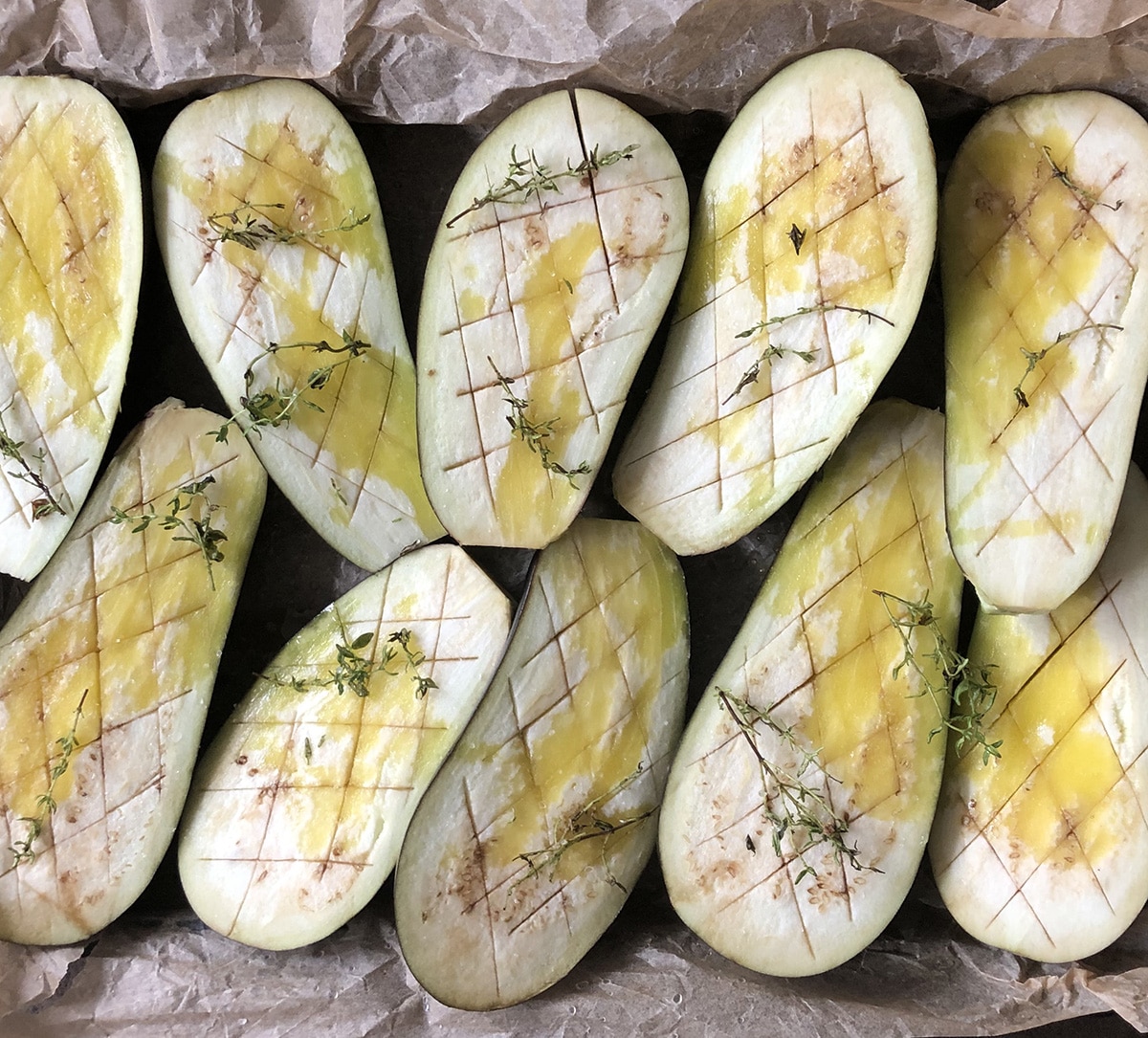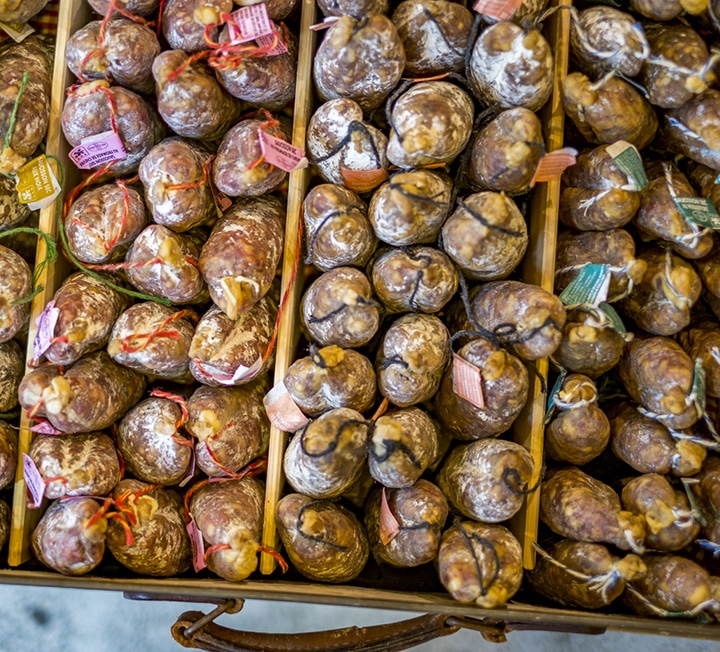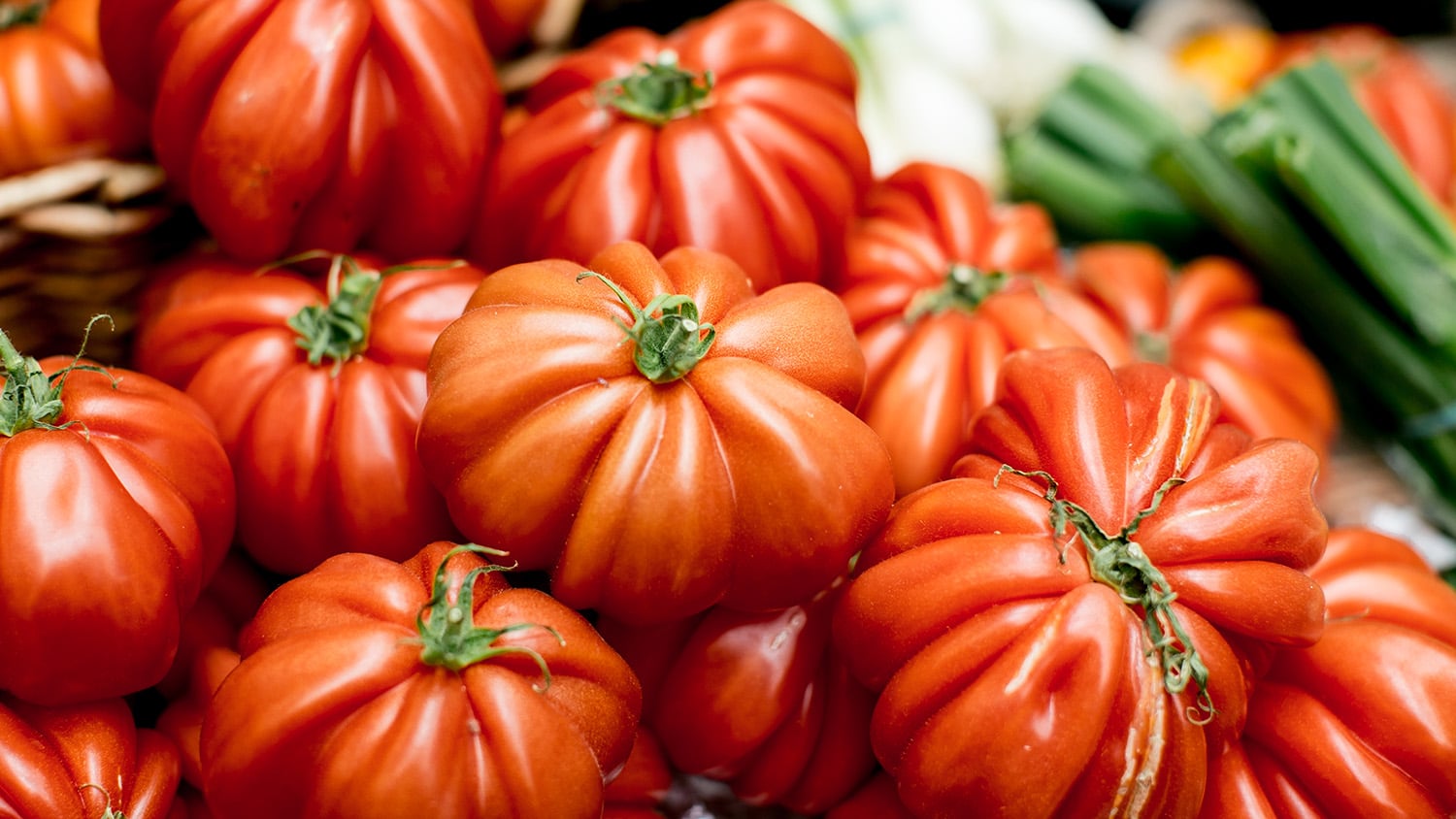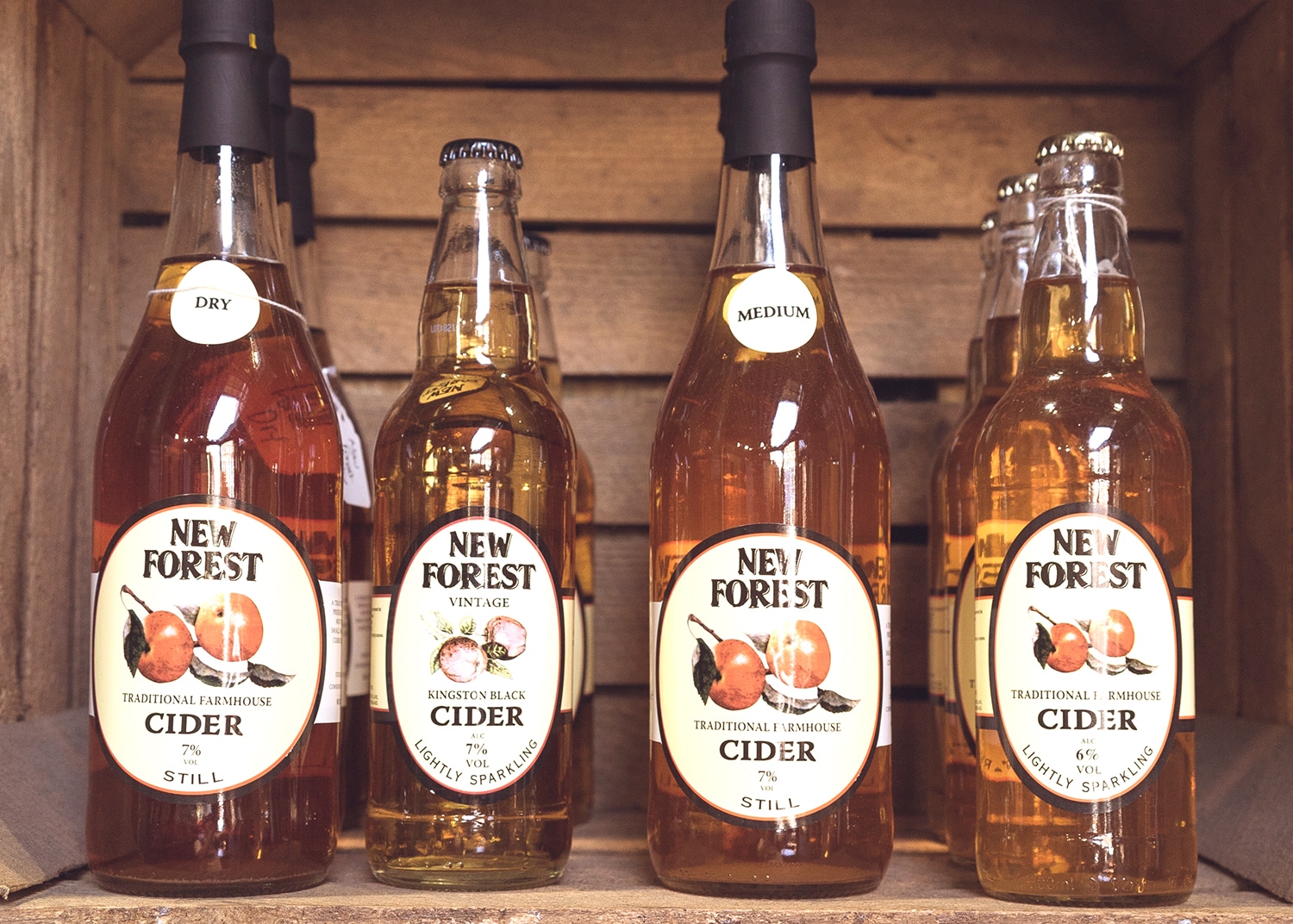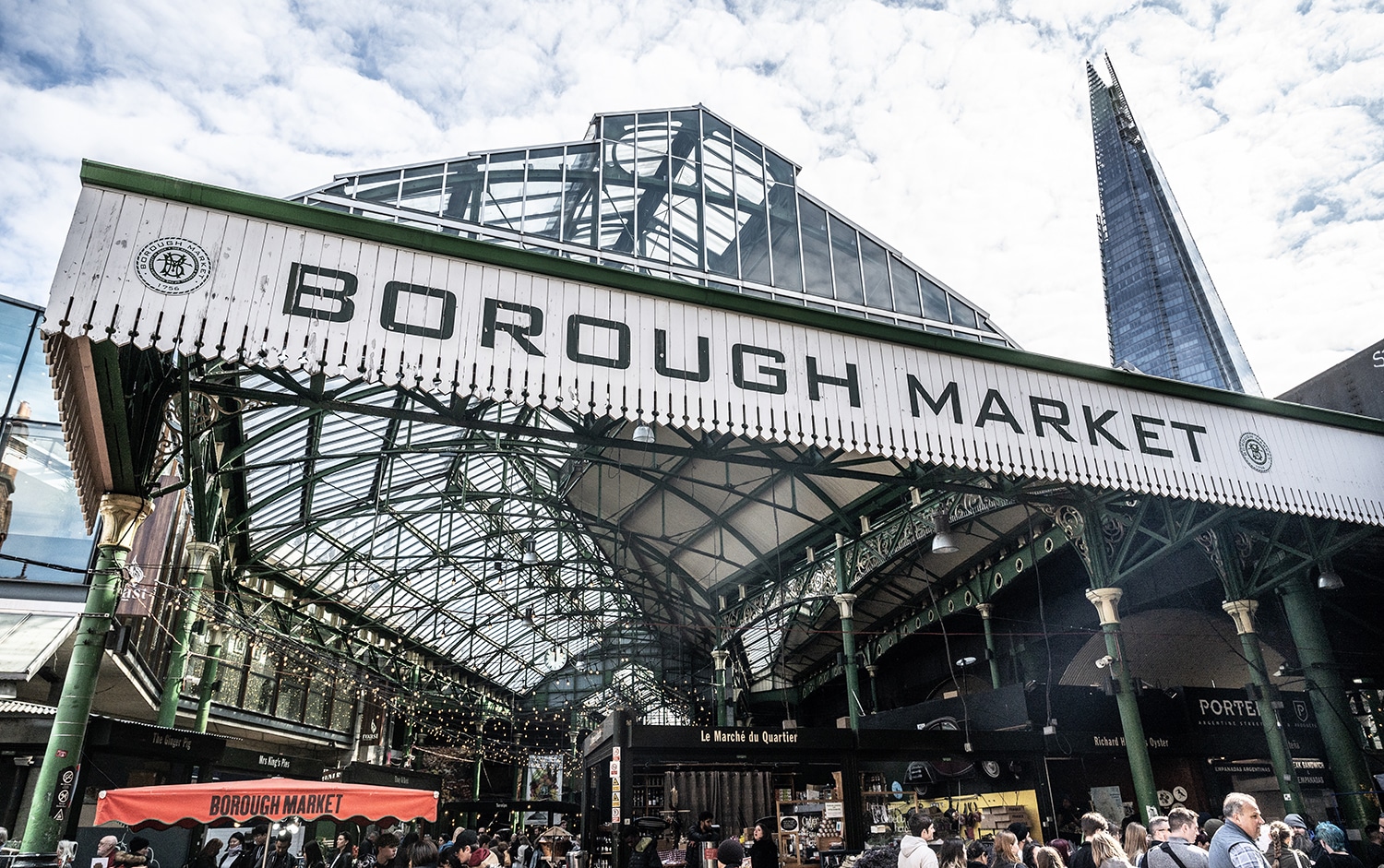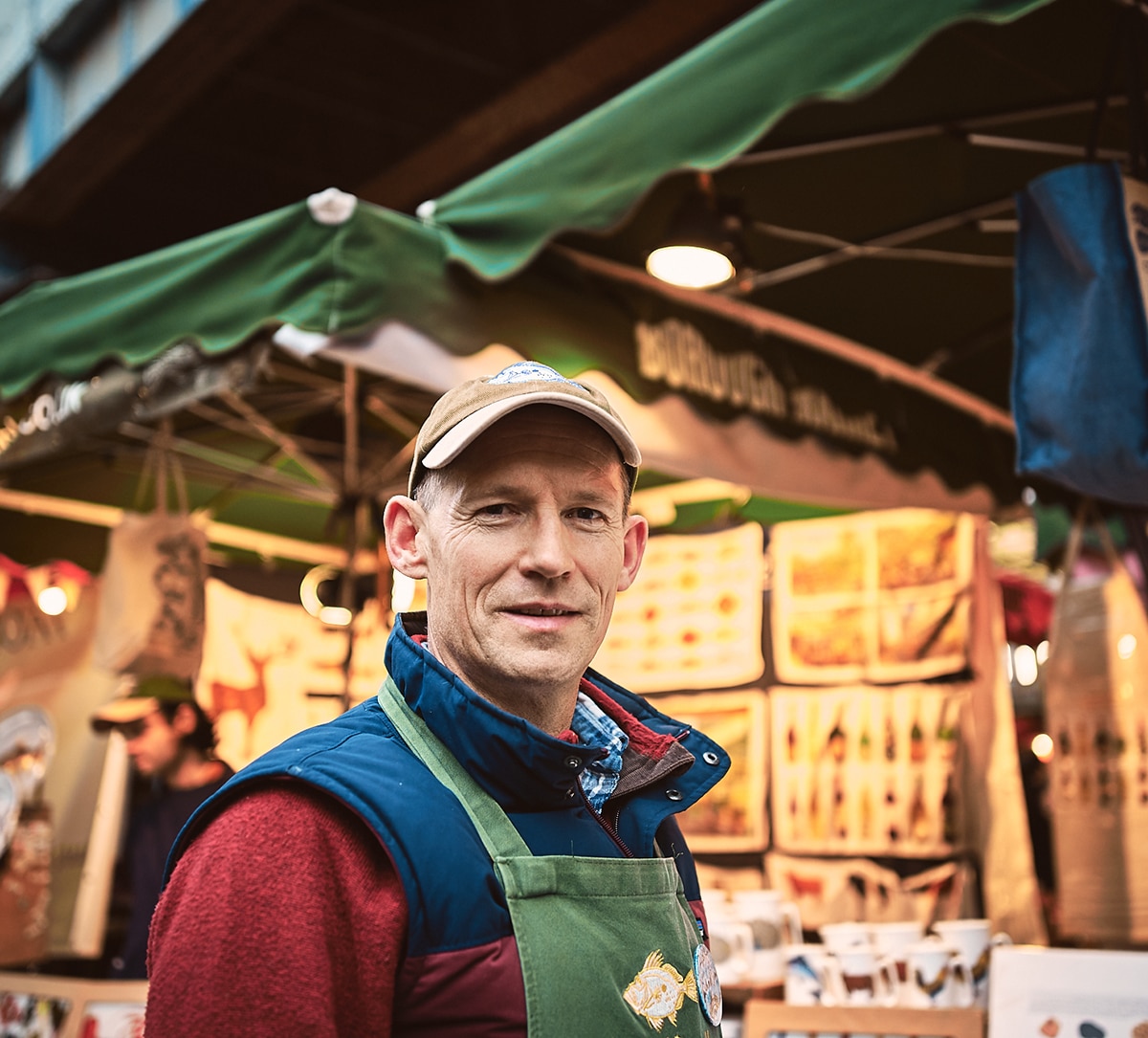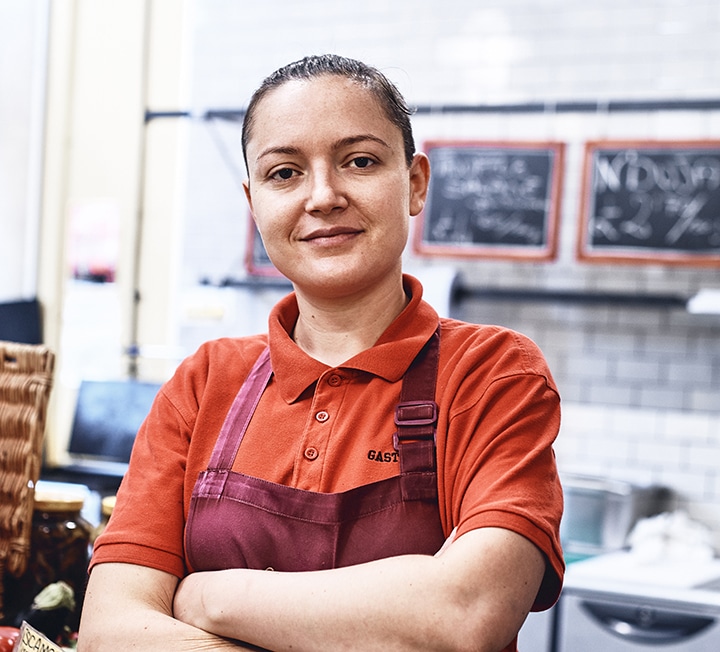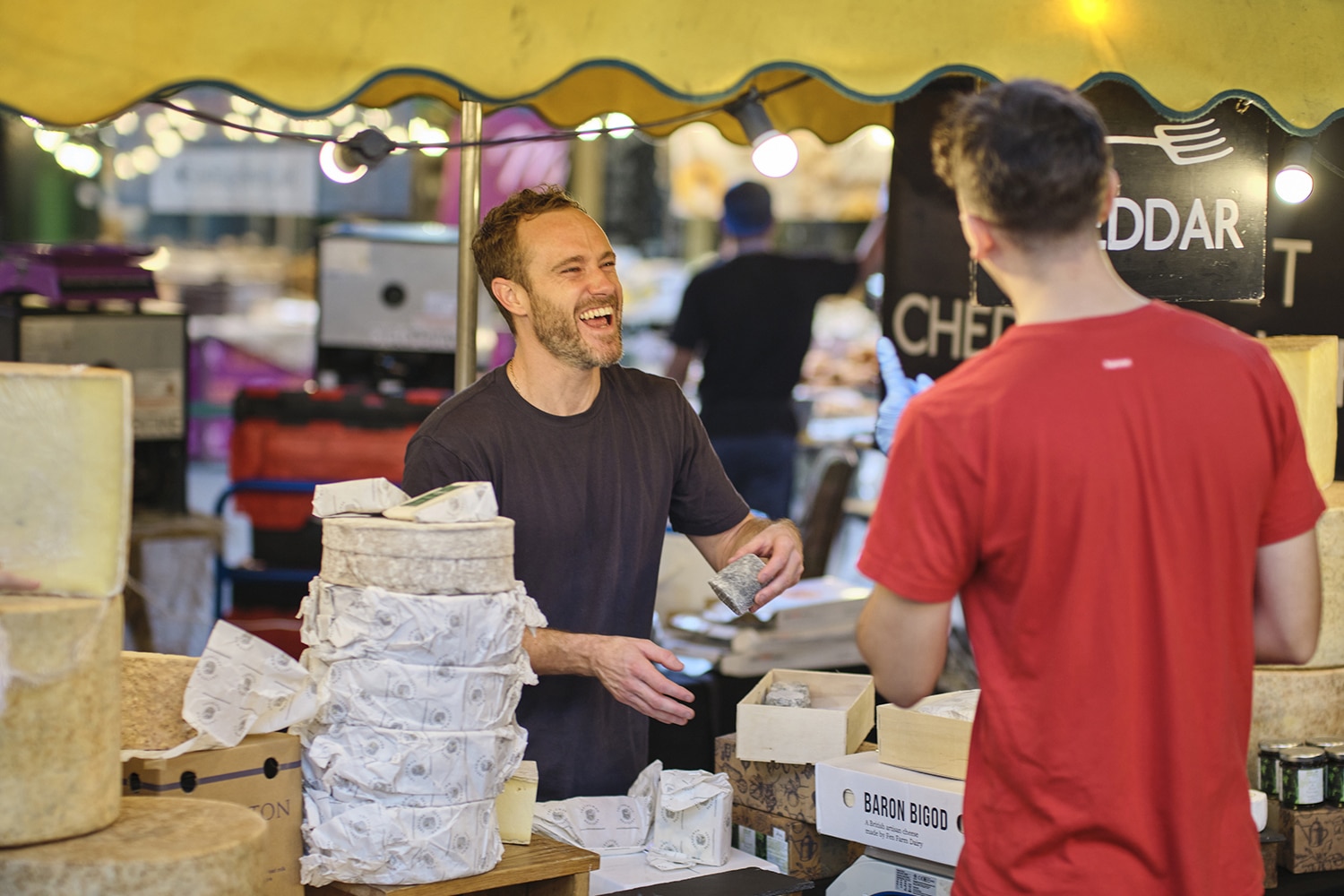Fresh peas, Turkish lamb, spicy sardines
Alex Praag, Borough’s Operations Manager, on the ingredients of a perfect summer
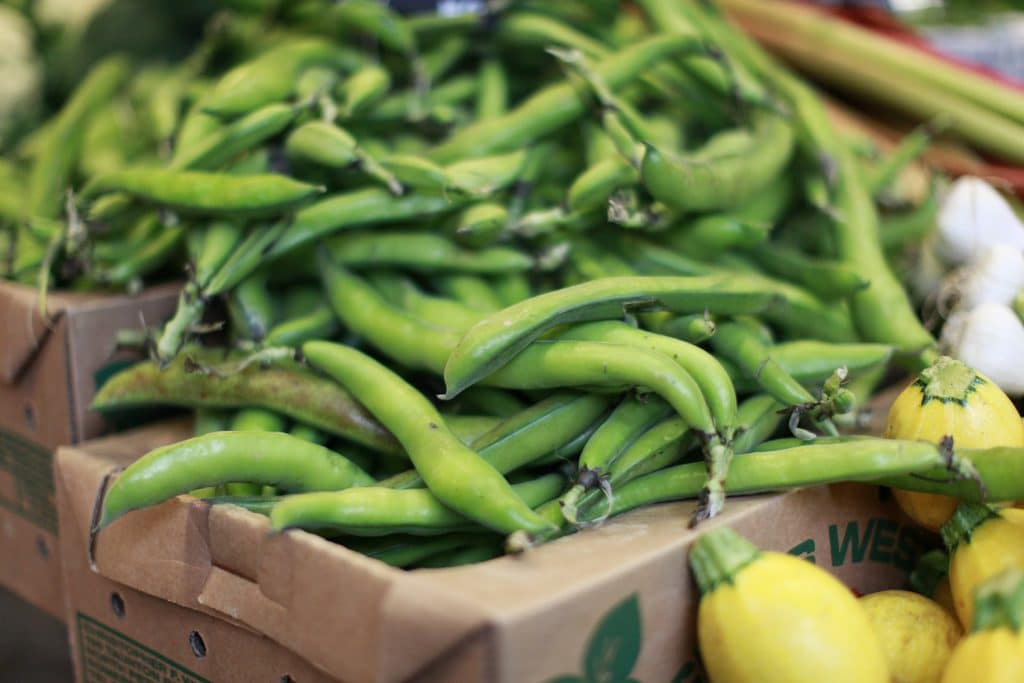

“ON THE AMALFI COAST, I HAD SOME OF THE BEST MOZZARELLA I’VE EVER EATEN (SECOND TO THAT OF BOROUGH MARKET OF COURSE!)”
Behind the scenes at Borough is a small team of dedicated professionals whose job it is to keep the wheels of this historic market turning. Most of them are completely obsessed with food, thanks in part to their daily exposure to exceptional produce and expert traders. We’ve asked them to share their thoughts on the ingredients and dishes that spark their excitement when summer rolls around.
Alex Praag is Borough Market’s Operations Manager, responsible for managing the team that keeps the market running smoothly, day by day.
What’s the item of summer produce you most look forward to?
Perhaps not widely appreciated enough, but peas and summer beans make up some of my favourite summer recipes – light, fresh and tasty. I remember growing peas as a child with my dad and the joy that this sweet treat would bring us!

Tell us about the most memorable meal you’ve ever eaten on a summer holiday. Where was it and what was it?
Do I have to choose just one?! First was the delicious Caprese salad I had in Praiano, on Italy’s Amalfi Coast. Some of the best mozzarella I’ve ever eaten (second to that of Borough Market, of course!), enjoyed while sitting on the cliff tops overlooking the Tyrrhenian Sea. A second would be the carved lamb in Istanbul – the waiter came to collect our order and the next minute he was carving up a whole lamb that was hanging in the window, waiting to be grilled.
It’s a perfect barbecue day. Are you the one firing up the barbecue or part of the crowd sitting with a cold drink while someone else sweats over the coals?
I’m most often front and centre, holding the helm at the barbecue. I really enjoy slow cooking, so usually it’s me sat nursing the coals for several hours before the guests arrive. Attending to the barbecue for multiple hours has definitely made me appreciate the value of a good cool box.
What’s your ultimate barbecue dish, either for cooking or eating?
My favourite barbecue dish is grilled chicken with watermelon, feta and mint salad – such a winning combination! Maybe a few buttered corn cobs on the side too…
If you were planning your perfect picnic, what foods from Borough Market would you add to your basket?
The lemon-marinated olives from Oliveology are the perfect complement to any picnic – maybe with spicy sardines from The Tinned Fish Market and Olivier’s Bakery’s rosemary sourdough.
Where in London would you take your Borough Market picnic basket for an afternoon in the sun?
I’d head up to Hampstead Heath and spend the day basking in London’s answer to the countryside.
What’s your summer sundown tipple of choice? In an ideal world, where would you be sitting to enjoy it?
A cold West Country cider while sat on the beach. Unbeatable!
A Rake’s progress
Richard Dinwoodie and Mike Hill, co-founders of The Rake, celebrate the 18th birthday of their very special beer bar
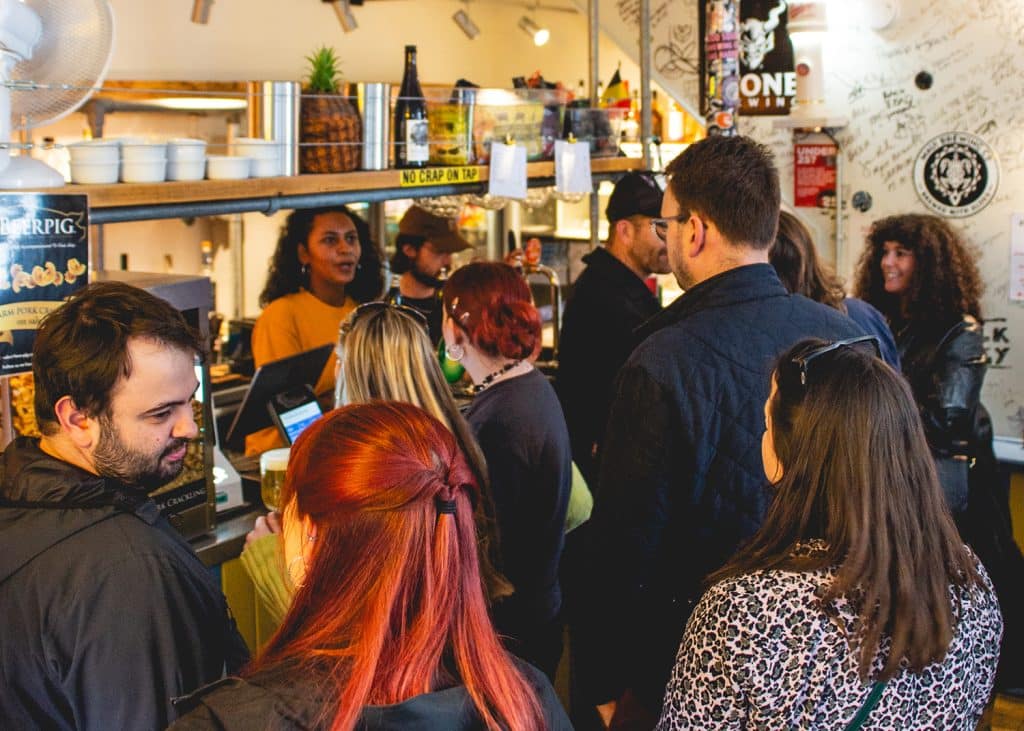

“WE WERE TOLD THAT BEER DRINKING WAS DECLINING, THAT WE WERE MAD AND WOULD BE BANKRUPT BY CHRISTMAS”
Words: Richard Dinwoodie and Mike Hill / Images: E Galvin Photography
The Rake occupies a site that has been serving drinks since its construction in the 1860s. Initially it operated as a bawdy Victorian drinking den for the local tenement dwellers, then some time between the two world wars it became a greasy spoon cafe serving tea to market traders and customers. Finally, we reach the beer temple it is today!
Having opened Utobeer in 1999, initially as an off-licence at Borough Market and later as a specialist beer wholesaler, we were constantly being asked by customers where they could find a bar that sold these beers. After much searching for a suitable site, we discovered that the lease on 14 Winchester Walk – conveniently close to our market stall – was soon to be available. We immediately saw the potential, but the narrowness of the building meant that for it to be commercially viable, we would need a little more space. Thankfully, we were able to negotiate for two parking spaces outside the building to be converted into a beer garden.

After the Borough Market trust agreed to our plans, we started work on stripping out the cafe and fitting out the layout we still have today, designed by our former colleague Jane Salveson, to whom we’re eternally grateful. The only part of the old cafe we kept was the Pilkington White Glass ceiling, partly because of its architectural interest, and also because the white helped to lighten the room.
The focus of the pub was to be 95 per cent on beer (there would be wine too – a red and a white). We were told that this would never work, that beer drinking was declining, that we were mad and would be bankrupt by Christmas. We probably were a bit mad, but what no one took into account was the interest being generated by the beer revolution in the US and the coming dawn of the UK brewing renaissance (‘craft beer’ had yet to be coined as a term), spearheaded at the time by Thornbridge, Dark Star, BrewDog and other aspiring young brewers. When The Rake first opened, the number of breweries in London was not even 10; today, it’s nearly 100!
So at 6pm on Friday 4th August 2006 we opened the door with three casks (including the rare 14% Thomas Hardy in cask for the first time) and six keg lines. We had keg beers from Veltins and Maisels from Germany, Sierra Nevada and Anchor from the US, and Liefmans and Boon from Belgium. We had cask beers from Darkstar, O’Hanlon’s, Thornbridge and Oakham Ales. Since we opened, we have sold a constantly rotating range, launched beers and breweries, introduced brews from across the globe, won awards and drawn criticism over pricing – but our principle has always remained beer first.
Many people ask why the walls are covered in graffiti – indeed the staff often have to stop customers from adding to it. From early on we had a close relationship with Stone Brewing and its founder Greg Koch. One evening he asked if he could sign his name on our wall (à la the Hemingway Bar in Havana). Much exchanging of t-shirts and stickers followed, and it was decided that any brewer who had their beers sold in The Rake should have the honour of signing the wall. So began a tradition that still goes on today. We’re now onto our second wall (the previous wall can be viewed online) and there will no doubt be a third.
Discover more
Stone fruits, rhubarb gimlets, Hong Kong toasties
Lucy Charles, Borough’s Director of Operations, on the ingredients of a perfect summer
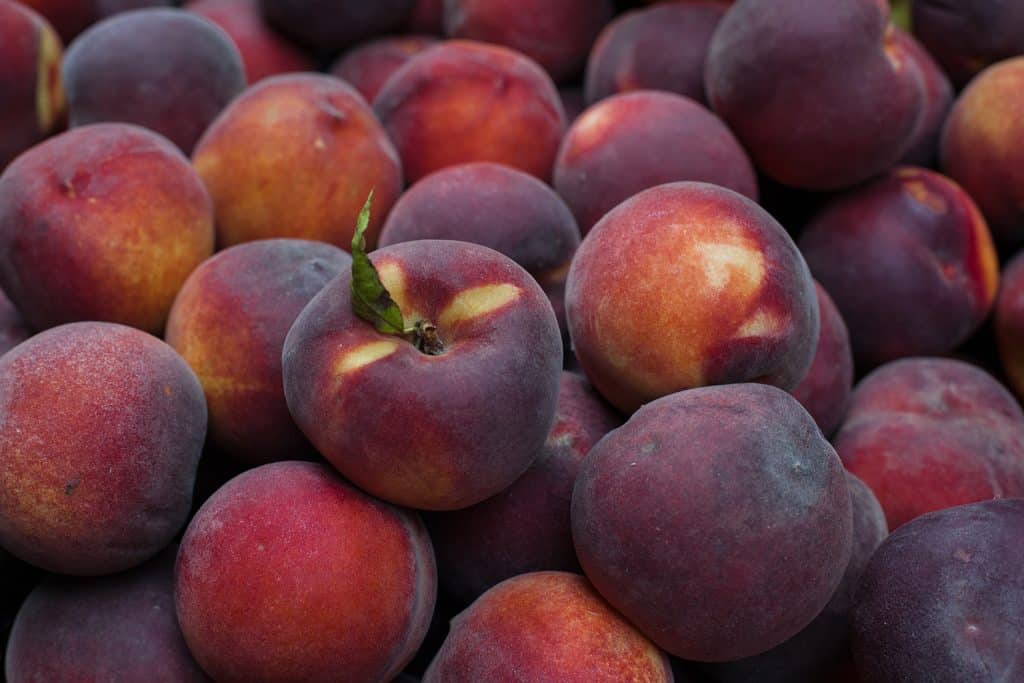

“MY PARTNER IS A CHEF, SO I CAN SIT BACK WITH A GLASS OF SOMETHING COLD AND OFFER HELPFUL CRITIQUE”
Behind the scenes at Borough is a small team of dedicated professionals whose job it is to keep the wheels of this historic market turning. Most of them are completely obsessed with food, thanks in part to their daily exposure to exceptional produce and expert traders. We’ve asked them to share their thoughts on the ingredients and dishes that spark their excitement when summer rolls around.
Lucy Charles is Borough Market’s Director of Operations, the executive team member responsible for overseeing the market’s food offering and customer experience.
What item of summer produce do you most look forward to when the season rolls around?
I’m not sure I can narrow this down to one thing – too many good things come to mind. There’s still not much that beats a perfect strawberry. I love peaches and nectarines too and if you catch a perfect one and mix it with some delicious mozzarella or burrata and some mint it’s a pretty good day. Courgettes too – yes please. Oh, and peas and broad beans. And tomatoes. I’m pretty indecisive, but if it’s meant to be eaten in summer and has been grown with care and attention, I probably look forward to it!
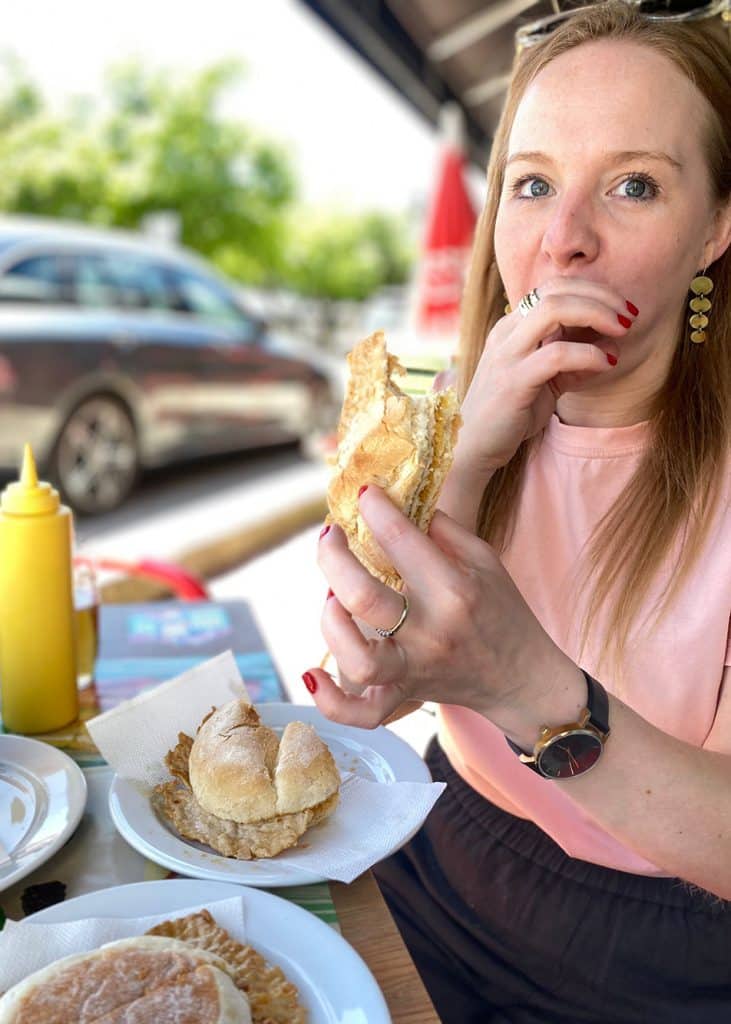
Tell us about the most memorable meal you’ve ever eaten on a summer holiday. Where was it and what was it?
Again, not sure how to narrow this down! Travel and eating are my favourite things. How about a top three? A burn-your-mouth searingly hot wok-fried pork/cabbage sort-of-omelette and loads of peanut butter between slices of thin white charred toast in Hong Kong (in an alleyway on child-sized plastic chairs) immediately springs to mind – I know how this sounds but honestly, it’s right up there. My first gyros (before I knew what a gyros was and thought the token chips were an accident) on a beach in Kos at sunset, 17 years old with no parental supervision and an epic hangover, was epic. Very recently, a few days in Portugal introduced me to the bifana, in its rightful home of Vendas Novas – get there if you can. It’s a simple and outrageously delicious pork sandwich (enjoyed with chips, sweet mustard and a little beer on the side). I’ve no idea how they do it but I’m going back for more very soon. Can I do a fourth actually? Roadside buffalo curd with coconut syrup in Sri Lanka. Pure joy.
It’s a perfect barbecue day. Are you the one firing up the barbecue or part of the crowd sitting with a cold drink while someone else sweats over the coals?
I’d love to say I’m queen of the coals but this isn’t really my comfort zone. Thankfully my partner is a chef so I can sit back with a glass of something cold and wait for the magic to happen! I’ll do a bit of turning here and there and definitely offer helpful critique.
What’s your ultimate barbecue dish, either for cooking or eating?
Simple grilled fish and veggies are my favourite things. Also, strips of ribeye dipped in green salsa and salt – I’m a lot about the condiments. The smoked aioli from Brindisa is great with most things and I always like to stash some wild garlic goodies from Fitz Fine Foods when that’s in season and bring them back out for summer eating. My friend had a barbecue at the weekend and inadvertently made halloumi crisps, due to poor attention span and temperature control – pretty nice! Halloumi in some form is a barbecue essential, I reckon, so grab the best there is from Oliveology.
If you were planning your perfect picnic, what foods from Borough Market would you add to your basket?
Okay… so, chicken pickle from Temptings, Cracker Kitchen seeded crackers and digestives from The Cinnamon Tree Bakery, pretty much any cheese from Mons Cheesemongers, onion mousse from De Calabria (if you can get it – gold dust!), anything from The Tinned Fish Market, throw in some tomatoes, cucumber, radishes and the best melon you can find. Bread. Great butter from Hook & Son. Something pickled / fermented. Bottle of something cold and fizzy. I could go on. Borough Market is the ultimate picnic shopping destination.
Where in London would you take your Borough Market picnic basket for an afternoon in the sun?
Probably Tanner Street Park – it’s close to the market and is always a really nice place to hang out, look at cute dogs and watch people play much better tennis than I can. There’s always a shady spot too, which is very necessary for me!
What’s your summer sundown tipple of choice? In an ideal world, where would you be sitting to enjoy it?
Probably a rhubarb gimlet. When rhubarb is in season I make as much rhubarb syrup as I can, to make it last as long as I can through non-rhubarby months. When this has run out, I’m pretty open to any other version of a gimlet. Or a margarita – especially frozen on our few sunny days a year. Or fizz. Or really cold white or rosé wine. Really, as long as it’s very cold and not sweet I’m on board. As for location, anywhere overlooking the sea. Failing that, an SE1 pavement seat for excellent people watching!
Pickled courgettes, elderflower syrup, green herb salsa
Zeenat Anjari, Borough’s Trader Development Manager, on the ingredients of a perfect summer
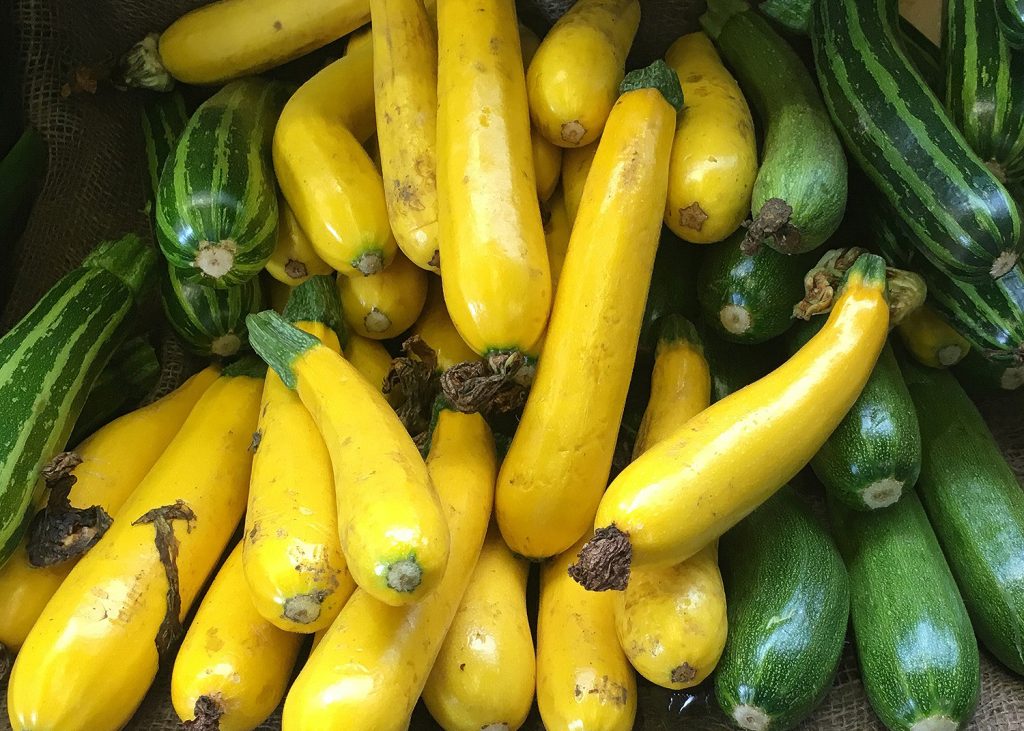

“MY PUGLIAN FRIEND INTRODUCED ME TO THE MAGIC OF GREEN AND YELLOW RIBBONS OF COURGETTE PICKLED TWICE OVER”
Behind the scenes at Borough is a small team of dedicated professionals whose job it is to keep the wheels of this historic market turning. Most of them are completely obsessed with food, thanks in part to their daily exposure to exceptional produce and expert traders. We’ve asked them to share their thoughts on the ingredients and dishes that spark their excitement when summer rolls around.
Zeenat Anjari is Borough Market’s Trader Development Manager, who works closely with our traders to achieve the vision set out in the Food Policy and 2030 Strategy.
What’s the item of summer produce you most look forward to?
I’m a city girl so I go looking in the parks and streets for fragrant signs of summer. Long sunny days with bright blue skies coax out great fluffy clouds of elderflower. If I get the timing right I’ll go foraging for 10 to 15 blooms to make elderflower syrup – such an easy recipe once you remember to filter out the bugs! But if I miss the flowering, I know one of the Borough greengrocers will have a seasonal basket of elderflower out front to remind me that summer has arrived.

Tell us about the most memorable meal you’ve ever eaten on a summer holiday. Where was it and what was it?
Each winter, I’m lucky enough to travel to the snow-covered prairies of Canada to visit my in-laws. But one special year we went in the summer. Across the province I found harvest festivals celebrating regional varieties of fruit, vegetables and grains, grown by dedicated farmers in Canada’s very short growing season. At the Morden Corn & Apple festival I tasted magical corn on the cob, boiled within hours of being picked and slathered in butter, each kernel coloured like a gemstone. Back in England, I now pass by Hickson & Daughter on the lookout for bright green husks of sweet, juicy corn, packed in the distinctive black and yellow boxes direct from North Maldon Growers in Essex.
It’s a perfect barbecue day. Are you the one firing up the barbecue or part of the crowd sitting with a cold drink while someone else sweats over the coals?
I’ve never been good at short-order cooking, which requires a laser focus that I find unsocial and exhausting! I’m happier prepping a marinade and leaving the cooking up to time and a consistent flame. I have been known to lazily turn the crank on a spit-roast lamb or, as a child, I’d have a go at carefully rotating the skewers of succulent mishkaki that my uncles would have grilling on an oil-drum barbecue.
What’s your ultimate barbecue dish, either for cooking or eating?
I love a quick-pickled salad to go with rich, juicy grilled meats. Of course, kachumber is the daddy but my Puglian friend Ida introduced me to the magic of green and yellow ribbons of courgette pickled twice over – first sweating over a colander in lemon juice in salt and then marinated in a wine vinegar pickle juice.
If you were planning your perfect picnic, what foods from Borough Market would you add to your basket?
Borough is the dream place to plan a picnic! We are so lucky to have amazing producers of bread, cheese and cold cuts, but it’s the accompaniments I seek out. I’ll bring a jar of La Pepiá’s green herb salsa to give zing to raw veg crudites and grilled beef. And a jar of homestyle ajvar from Taste Croatia to mix into a salad of new potatoes or red onion and white beans.
Where in London would you take your Borough Market picnic basket for an afternoon in the sun?
I absolutely love the ‘secret’ garden at St John’s Lodge in Regent’s Park. It became a friend I looked forward to seeing on daily walks during the seasons of Covid. The gardeners who work there are playful with planting and it’s so fun to discover short-lived treasures like lily of the valley and fraises des bois.
What’s your summer sundown tipple of choice? In an ideal world, where would you be sitting to enjoy it?
When I was growing up, the only time I saw people drinking was on TV. There’s a classic ad for Campari and lemonade with cockney model Lorraine Chase looking ever-so sophisticated drinking by a huge pool at some Italian villa or French chateau. I want to be her, looking sharp and drinking red vermouth and soda in the grounds of a fabulous villa on a Tuscan hill overlooking Florence.
Miso aubergine, Portuguese octopus, French lemonade
Chez Ramirez Vitalis, Borough’s Retail Team Leader, on the ingredients of a perfect summer
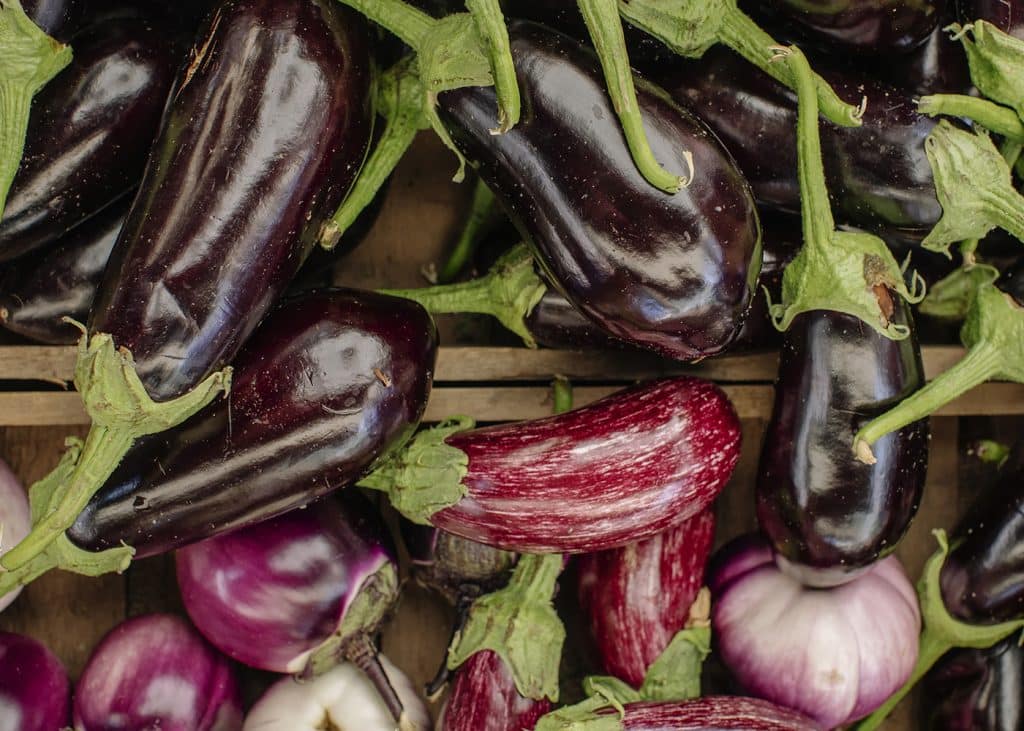

“I HAVE SUCH SPECIAL MEMORIES OF FAMILY BARBECUES, WITH DELICIOUS FOOD MADE WITH THOUGHTFULNESS AND LOVE”
Behind the scenes at Borough is a small team of dedicated professionals whose job it is to keep the wheels of this historic market turning. Most of them are completely obsessed with food, thanks in part to their daily exposure to exceptional produce and expert traders. We’ve asked them to share their thoughts on the ingredients and dishes that spark their excitement when summer rolls around.
Chez Ramirez Vitalis is Borough Market’s Retail Team Leader, responsible for the overseeing the products, displays and impeccable customer service at The Borough Market Store.
What’s the item of summer produce you most look forward to?
I have a strong affinity for vegetables. Whether roasted, boiled, grilled or incorporated into a salad, I eagerly embrace any opportunity to enjoy them. Aubergine and courgette are my preferred summer vegetables, as they enhance the flavour and texture of simple dishes. I recently ate at Borough Market’s plant-based restaurant, Mallow, and it’s there that I first came across nasu dengaku – aubergine cooked in miso sesame glaze, with edamame lime cream. I was so impressed, I recreated it at home, and it was absolutely delightful.

Tell us about the most memorable meal you’ve ever eaten on a summer holiday. Where was it and what was it?
Last summer, my mother and I travelled to Porto, Portugal, and we still reminisce about one of the meals we had there. Being a seafood enthusiast, I always opt for fish whenever I’m near the coast. We dined at a bright, airy restaurant near the São João Baptista da Foz fortress, with breathtaking views of the blue Douro river. I had the grilled octopus leg served with smoked pepper cream, onions and carnaroli rice. It was impeccably seasoned, and the octopus simply melted in my mouth. It was an experience that left a lasting impression.
It’s a perfect barbecue day. Are you the one firing up the barbecue or part of the crowd sitting with a cold drink while someone else sweats over the coals?
I must admit, I’m always the one relaxing with my feet up! I’m more than happy to take charge of the music and drinks for everyone, but I’m not particularly keen on sweating over the coals on a scorching summer’s day. The thing I cherish most is how a barbecue unites my family. I have such special memories of my father gathering us all in the back garden while my siblings and I played games or kicked a ball around, with music playing a crucial role (my father is a DJ), and delicious, nourishing food being made with thoughtfulness and love. Growing up, it was always one of the highlights of my summer.
What’s your ultimate barbecue dish, either for cooking and eating?
It’s quite challenging to narrow it down! I do love smoky barbecued chicken, extra crispy on the edges, with a tangy, spicy sauce. This always complements well with some buttery corn on the cob. I love it when the corn is slightly charred, adding a smoky flavour to balance out the sweetness. Mostly, though, I love the communal aspect of barbecue cooking – the interaction and sharing.
If you were planning your ideal picnic, what foods from Borough Market would you add to your basket?
My essential items include breads, cheeses, antipasti, sweets and drinks. I particularly enjoy Olivier’s Bakery’s ciabatta bread. When it comes to cheeses, I’d opt for ricotta cheese from Kappacasein and truffle cheese from Bath Soft Cheese Co for their rich, flavourful taste. As an olive enthusiast, I can’t resist the green olives with chermoula from The Turkish Deli. For sweets, it’s brownies from The Cinnamon Tree Bakery. Lastly, I’d choose The French Comte for their artisanal French sparkling lemonades from Alsace, which are fruity and refreshing on a summer day.
Where in London would you take your Borough Market picnic basket for an afternoon in the sun?
On one of the rare sunny days, I would bring my picnic to Tabard Gardens. It’s close to the market, less crowded than other spots in London even on a warm day, and offers stunning views of The Shard, particularly at sunset. A tranquil, pleasant setting for food and conversation.
What’s your summer sundown tipple of choice? In an ideal world, where would you be sitting to enjoy it?
As the summer sun goes down, my drink of choice is a refreshing and fruity Pimm’s. The blend of herbs, fruits and vegetables, with extra of mint and orange slices, perfectly embodies the spirit of summer for me. I’d savour it by Regent’s Canal – seated on a bench, watching people and boats go by while soaking up the sun by the water, allowing me to value my neighbourhood and feel a real sense of connection to London.
English tomatoes, Canarian potatoes, chilled cider
Bethan Davies, Borough’s Head of Comms & Marketing, on the ingredients of a perfect summer
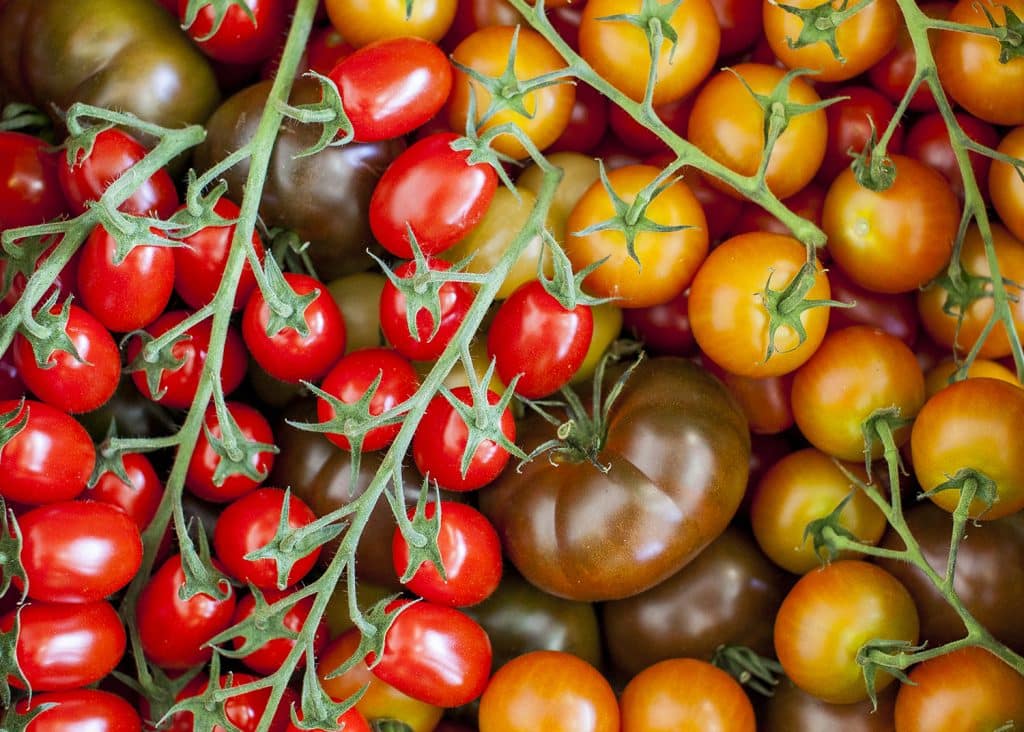

“FROM WORKING HERE, I KNOW HOW IMPORTANT IT IS TO BE AWARE OF THE SEASONS AND ACTIVELY BUY THINGS AT THEIR BEST”
Behind the scenes at Borough is a small team of dedicated professionals whose job it is to keep the wheels of this historic market turning. Most of them are completely obsessed with food, thanks in part to their daily exposure to exceptional produce and expert traders. We’ve asked them to share their thoughts on the ingredients and dishes that spark their excitement when summer rolls around.
Bethan Davies is Borough Market’s Head of Comms & Marketing, responsible for the many ways the market communicates with its customers, traders and the wider public.
What’s the item of summer produce you most look forward to?
Tomatoes. When they’re at their most fragrant and delectable, they’re my favourite thing to eat, often just with a generous sprinkle of salt. I like the unpredictability of British fruit and veg and how it challenges me to think about what to cook. Working for the market, I know it’s incredibly difficult for our traders to predict when certain seasonal produce will be in stock, but that makes it even more important to be aware of the seasons and the weather and actively buy things at their best.
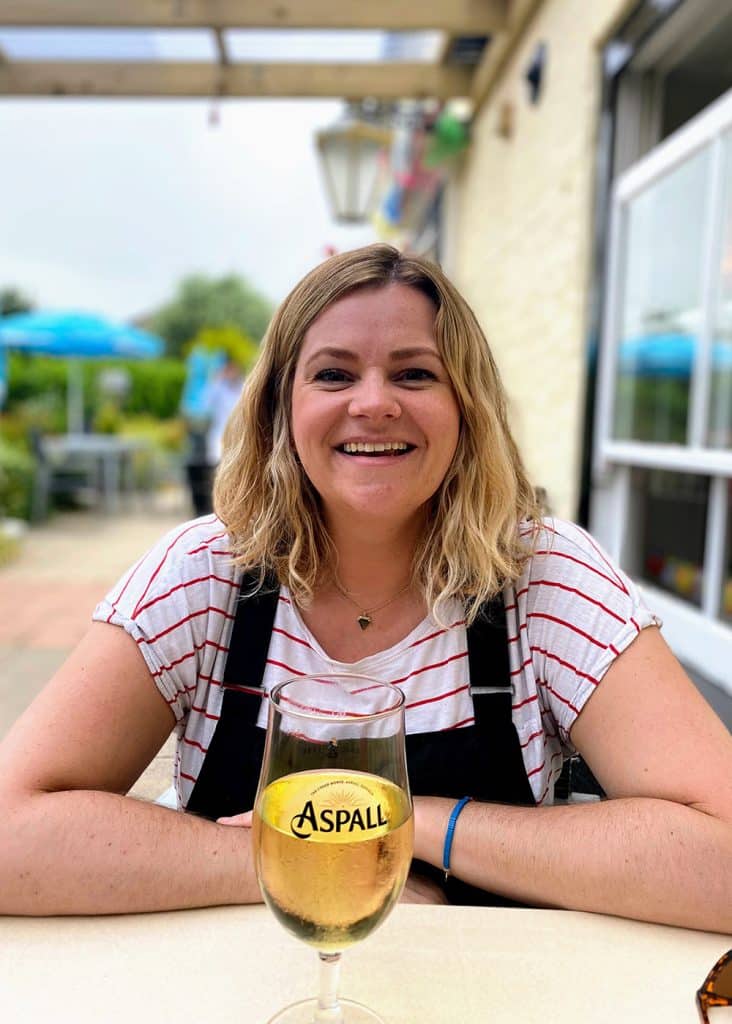
What’s the most memorable meal you’ve ever eaten on a summer holiday. Where was it and what was it?
In 2012, my friend Sam and I had been staying in a cheap all-inclusive in Tenerife, where we ate buffet meals all week. We decided to treat ourselves to a dinner out on the last night. We picked a traditional restaurant, where we ordered Canarian potatoes – new potatoes, cooked in salted water to the point of evaporation, which leaves this amazing crust, served with red and green mojo. We also had the most delicious, perfectly seasoned, rare steak. After a week of bland food, the flavours were magnified, and our tastebuds were in shock! I spent months trying to recreate that green mojo and I often cook my potatoes with this method even now.
It’s a perfect barbecue day. Are you the one firing up the barbecue or part of the crowd sitting with a cold drink while someone else sweats over the coals?
I’m the sides queen in my family. I always do a really simple new potato salad with avocado, lemon and cress for gatherings, and you’ll find my beloved tomatoes in there too, layered with fresh cheese and herbs. I’m lucky to have some amazing cooks in my life, so more often than not I’ll let them do incredible dishes cooked over fire and I’ll happily provide the drinks! My special is a salted watermelon margarita – refreshing and perfect to make in a pitcher for ease.
What’s your ultimate barbecue dish?
I don’t think you can beat a perfectly cooked steak. A generously sized cheaper cut like bavette served rare and sliced crossways (not with the grain – that makes it chewy!) before being doused in a herby, tangy sauce is my idea of heaven. I also really love grilled pineapple sprinkled with cinnamon and sugar – a simple, delicious summer dessert.
If you were planning your ideal picnic, what foods from Borough Market would you add to your basket?
I’d create the perfect sandwich: a fresh ciabatta big enough to hold layers of Italian ham, mozzarella, some sort of chargrilled or pickled veg, a handful of rocket and a generous layer of mustard mayo. Squished, wrapped in paper and sliced for easy munching – the dream.
Where in London would you take your Borough Market picnic basket for an afternoon in the sun?
I love the Southbank. I used to visit a lot as a kid and I’ve always enjoyed the buzz and proximity to all the plays and exhibitions. The Queen Elizabeth Hall rooftop garden is a great spot for a picnic – it’s free, has amazing views and is perfect to sit and enjoy the sunshine before maybe making an impromptu decision to see something at the theatre.
What’s your summer sundown tipple of choice? In an ideal world, where would you be sitting to enjoy it?
My ultimate summer drink is cider. I’ve gone on a long journey of discovery since my teenage ‘cider and black’ era and now really enjoy the wide range of styles available, particularly at Borough Market. The spectrum of flavours and methods means I never get bored of trying different ciders. But each time, that initial sip makes me think of long, lazy summer days, fun times with friends and inevitably some questionable decisions. Ah, life experience! And if I could be anywhere, it’d be in Hout Bay in Cape Town, where they do sundowners better than anywhere else I’ve been.
The Kolae guide to grilling
Andy Oliver, co-founder of Borough’s Kolae restaurant and an expert on Thai-style grilling, provides his top tips for barbecuing at home
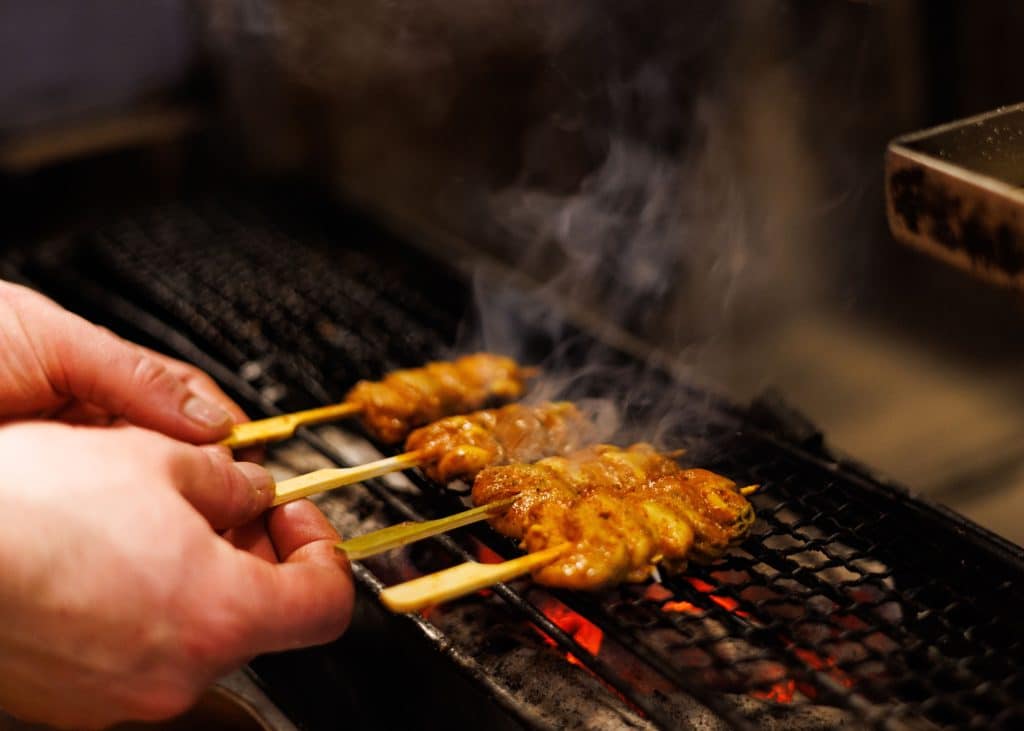

“BANANA LEAVES ADD A UNIQUE HERBACEOUS SCENT TO THEIR CONTENTS WHILE PREVENT THE CONTENTS FROM DRYING OUT”
Words: Andy Oliver / Images: Anton Rodriguez
1. Choose the right cuts
One of the best ways to get the most out of ingredients on the grill is through slow and steady cooking, using specific cuts. Fish or meat on the bone work particularly well. Cuts with a bit of fat, such as pork neck or chicken with the skin still on, will bring great flavour and good texture when cooked slowly and steadily, as the fat melts and the meat slowly browns.
2. Manage the heat
Careful heat management is also needed to achieve this effect. Damping the coals with a smoke mix – and using hooks, baskets or simple racks instead of heavy, heat-conducting bars – will help keep your grilling under control. It’s also important to maintain an appropriate distance between your ingredients and the heat source, as this ensures the meat is evenly cooked through. This traditional Thai approach to grilling requires patience, but it helps to achieve perfectly grilled dishes.
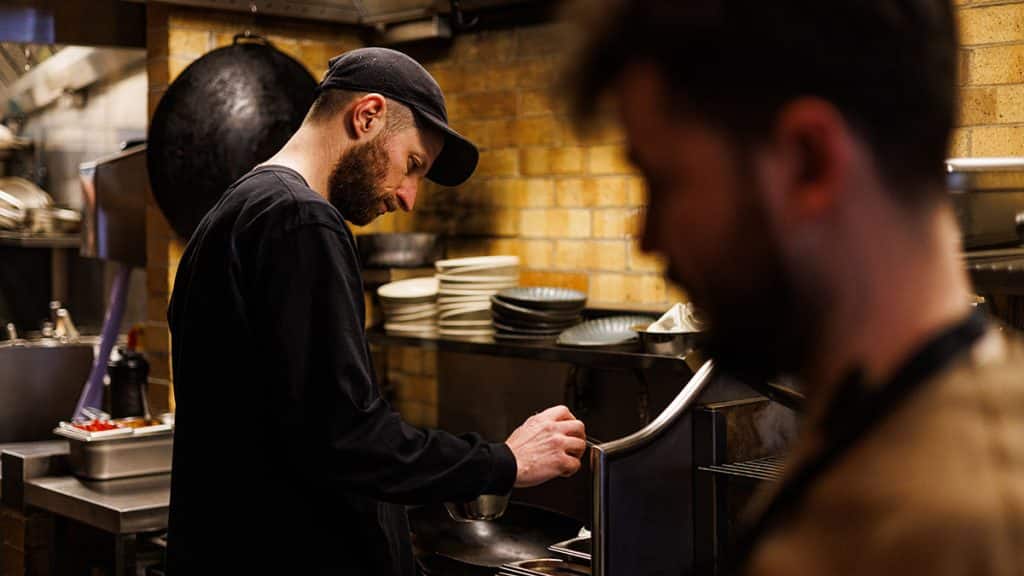
3. Make use of your oven
Combining your kitchen oven with your barbecue grill is a very useful technique if you have lots of guests to entertain or if your barbecue isn’t big enough for everything. Baking ingredients in the oven before finishing them on the grill allows you to cook your food gently and steadily without the stress of juggling time and space. Starting some sausages or boneless chicken thighs for 15 minutes in a 120C oven before finishing them on the grill can really cut the cooking time down without losing flavour. Even roasting bigger pieces of meat like a butterflied leg of lamb in an oven at 150C until it’s partway cooked can be great, as can baking spiced squash or cauliflower in a 200C oven before a final char on the barbecue.
4. Add curry sauces to grilled ingredients – and vice versa
Try marinating ingredients in curry-like sauces before placing them on the grill. At Kolae, which is named after a traditional southern Thai dish, we utilise curry pastes made from dried red chillies, shallots, ginger and lemongrass, plus spices like coriander and cumin or cassia, cooked with coconut cream and seasonings. For an even deeper and more complex flavour, grill specific elements and then add them into curries. Grilled beef can be sliced and folded into a spicy jungle curry, adding a rich, smoky taste.

5. Create banana leaf wraps
A great way to elevate the flavour of grilled meats, herbs or fish on the barbecue is to wrap them in banana leaves. When cooked, the banana leaves add a unique herbaceous scent to their contents, and they also prevent the contents from drying out. You can even grill certain styles of curry in banana leaves – try a rich red curry of monkfish and Thai basil, or northeastern Thai curry of grilled chicken, pea aubergines and herbs. They can also be used to create a dessert of sticky rice and sweet coconut cream.
6. Embrace the char
Utilising the grill for blackening certain ingredients before peeling them can really boost the flavour. Charring long aubergines, shell-on prawns, shallots or chilies adds a smoky, complex depth to their taste – an easy way to transform simple ingredients.
7. Serve a Thai salad on the side
Accompanying your barbecued dishes with a refreshing, spicy Thai salad is ideal for warm, summer days. The fresh ingredients of the salad really cut through the rich smokiness of the grilled meats and vegetables, elevating the meal and bringing a real vibrancy. Try a pounded salad of green papaya, shrimp, peanuts and tomatoes; a sour green mango salad with deep-fried fish and cashew nuts; an Ajaad relish-style salad of cucumber, ginger and chilli; or a pomelo salad with roasted coconut, chilli jam and poached prawns.
Southern Thai-style grilled chicken
A simple, brightly flavoured southern Thai barbecue recipe from Andy Oliver of Kolae
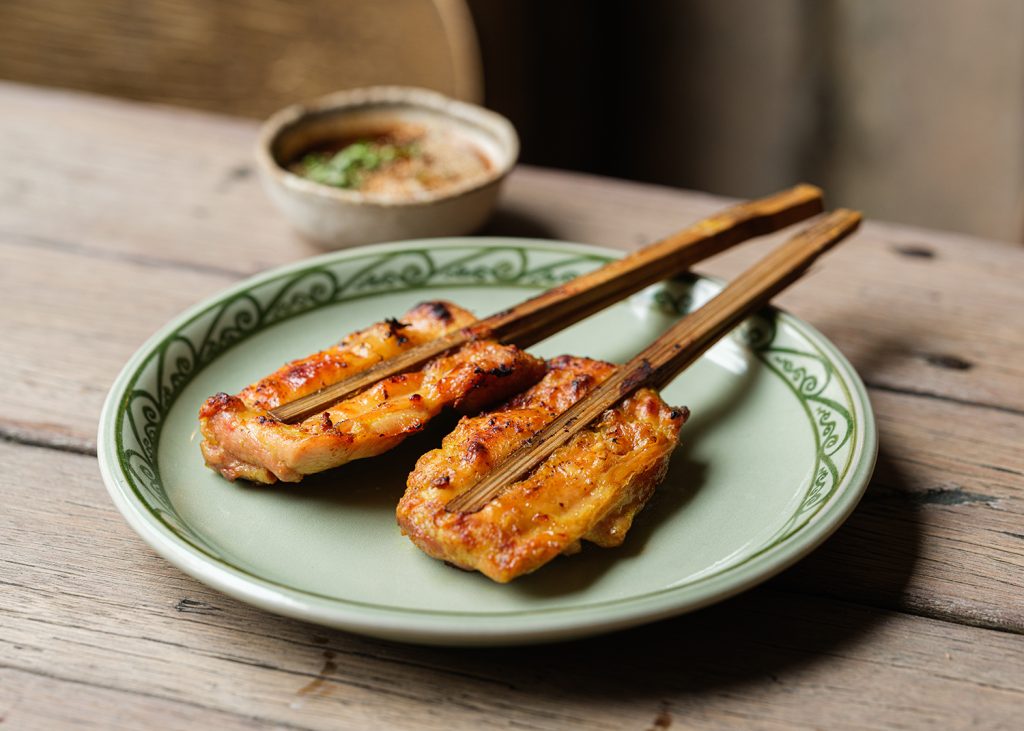
From top to toe
Giulia Crouch on how the breadth of Italian regional food cultures is brought to life at Borough Market
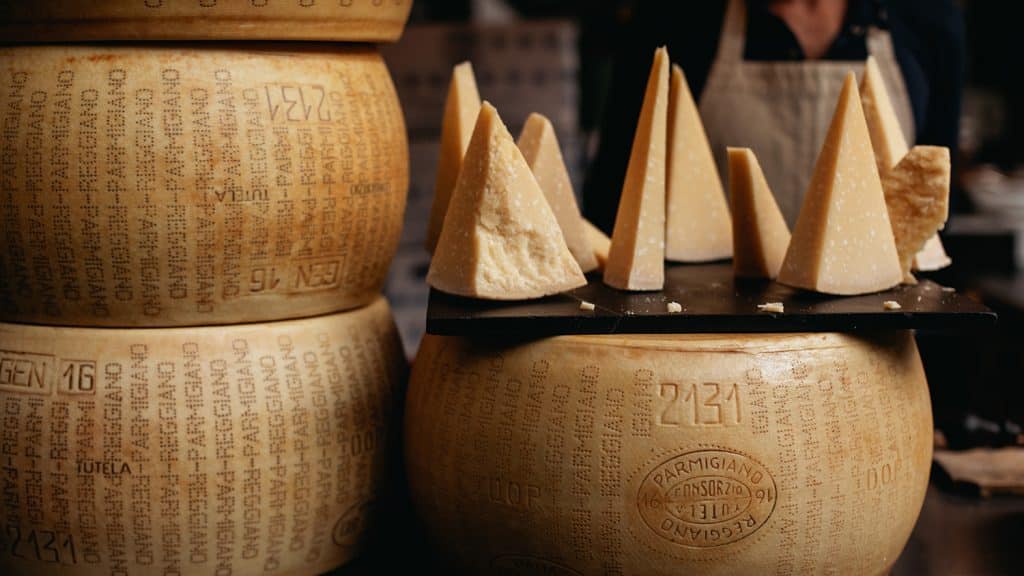

“HERE, YOU CAN EXPLORE THE BREADTH OF ITALIAN REGIONAL CUISINE WITHOUT HAVING TO BUY A PLANE TICKET”
Words: Giulia Crouch
Italian cuisine is famously regional – fiercely so. Ask a chef in the south to create a dish of the north and it’s likely they’ll turn up their nose and launch into a speech about the real taste of Italy (the food of their region, obviously). If you’re eating in Italy, selecting a dish from the local area rather than one from another part of the country is always a wise choice for your tastebuds.
I saw this firsthand last summer when one of my relatives, Maria, a southern Italian, attempted to make carbonara, a dish from Rome, a city in central Italy. I had never known her make anything that didn’t taste good, but this carbonara, which was oddly slimy and really quite bland, was one of the worst I’ve ever tasted. But then Maria didn’t grow up eating the dish or learning how to make it. It’s simply not in her blood. Instead, her jam – and that of her fellow southerners – is tomato-rich dishes such as caprese salad, spaghetti with tomato sauce and the unbeatable Margherita pizza.
Head north, to Emilia-Romagna, and you’ll find different flavours: rich, meaty ragù, tortellini in comforting broth, and many more rice dishes than you’d see down south. The same distinct regionality isn’t just true for recipes but also for single products which in some cases can be traced back to specific cities. Within Emilia-Romagna, balsamic vinegar hails from Modena and prosciutto di Parma is from – you guessed it – Parma.
A major reason for this is the diversity of the country’s geography and climate, with its long coastlines and mountain ranges, and a distinctive shape which results in the southern regions being closer to north Africa than they are to France. But history also plays its part. “You have to remember that Italy has only been a unified country for a little over 150 years,” says Mark Riddaway, author of Borough Market: Edible Histories. “Before that it was made up of lots of independent city states, each with its own history of trade, migration and conquest and its own distinctive culture. I think that helps explain why regional identity still runs so deep. And because food is so central to Italian society, it’s through food that these historic identities are often asserted.”
This comes through clearly in the zeal with which each town, city or region will promote its signature fare. Recently, on a trip to Bologna, I witnessed a mortadella producer pick up a 2.3kg sausage, hold it in his arms like a baby, and beam as he invited people to take pictures of him with his pride and joy.
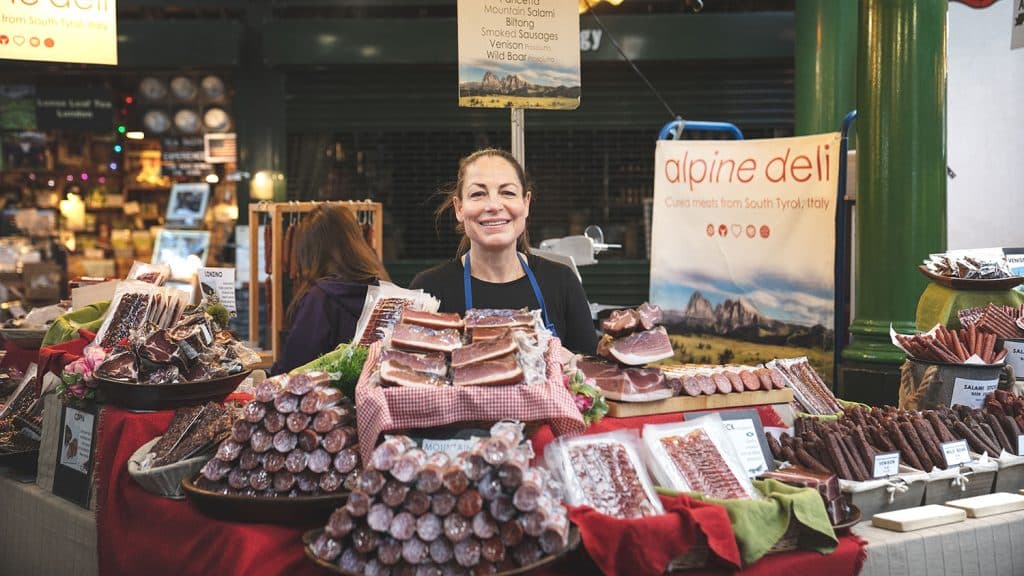
In Borough Market you can explore the breadth of Italian regional cuisine without ever having to buy a plane ticket. There are seven Italian food stalls here, all offering very different products. One of the most striking to me is Alpine Deli. Owner Thea Wunderer sells the products of her home region, South Tyrol, which, bordering Slovenia, Austria and Switzerland, is as far north in Italy as you can go. The food is influenced by its mountainous terrain and, to many people, appears more German or Austrian than Italian – though really it’s its own thing: Alpine.
Specialities include venison prosciutto, which is air-dried and lightly smoked – a key characteristic in the food of South Tyrol. Thea has a whole range of smoked charcuterie available including smoked sausages, smoked speck and Alpine bresaola made with silverside of beef. The speck is normally sliced very thinly or put inside traditional bread dumplings known as knödel or canederli.
The meaty, hearty food of South Tyrol could hardly be more different from the sun-soaked, vegetable-rich cuisine of the south. Wander two minutes from Thea’s stall to another called De Calabria, where you can enjoy the wonderful produce of Calabria, and you’ll be journeying from the top to the ‘toe’ of Italy – the southernmost part of the country.
Giuseppe Mele, who established the business in 2005, likes to celebrate the varied terrain of his home region and the wealth of different produce that comes from it. “The food of Calabria is influenced by the many microclimates of the region,” he says. “There are mountains and valleys and coastlines, so it brings with it a lot of diversity.” One year, when the olive harvest in Italy was generally poor, brilliant oil could still be produced in Calabria thanks to the highly specific conditions of one part of the region.
At the stall you can find examples of fantastic Calabrian extra virgin olive oil, honey, cheese and an array of chilli products. Calabrians certainly like their spice, as is clear from their love of nduja, a spreadable salami made from pig’s cheeks, belly and lard. Rendered a vibrant, deep red from a healthy dose of Calabrian chilli peppers, it’s one of the most popular items on the stall. “Thirty years ago, nduja was only known in a little area nearby where I’m from,” says Giuseppe. “Now, and in the last 15 years, it’s exploded and is known all over the world.”
Sun-dried tomatoes are also key to the cuisine and Giuseppe’s, which he finely chops and puts in oil with dried chilli, fennel seeds and dried oregano, are extra special. I have a jar in my fridge and I use them on everything.
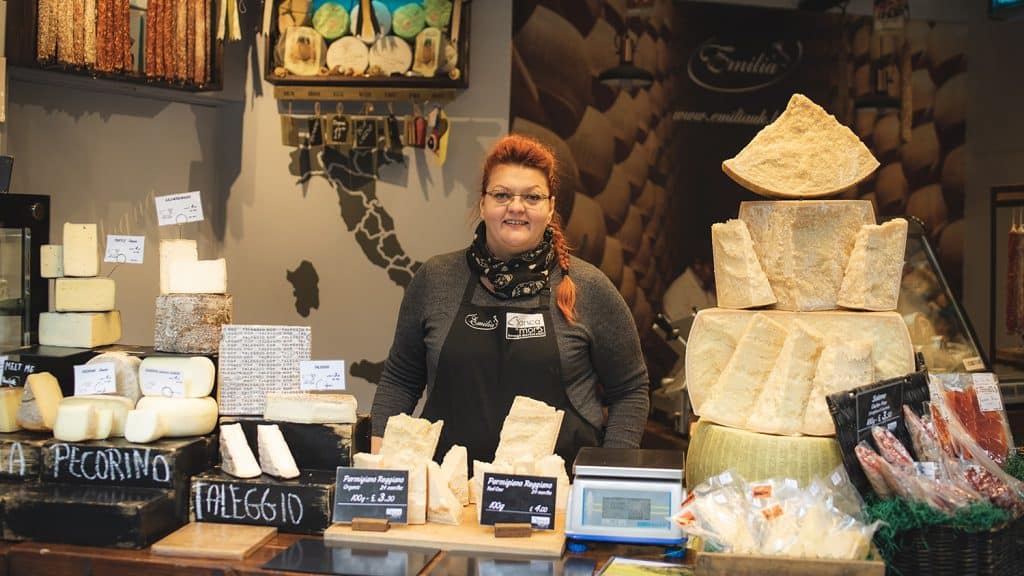
Around the corner from De Calabria, you’ll also find the proud produce of Emilia-Romagna on offer in Borough Market. Ewa Weremij, who owns Bianca Mora, is passionate about both the food of the region and the regionality of Italian cuisine in general. “It’s so important because southern Italy is so different from northern Italy and central Italy is different again. The south is sunny and dry, so prosciutto di Parma or parmesan cheese could never be made there because there’s not enough humidity. Instead, you get olives, olive oil and citrus fruits.”
Ewa says that even within one region the food can have its own local distinctions. “Emilia-Romagna used to be two regions, Emilia and Romagna, and while it’s one today the cuisine is still different between the two parts.” In other words, Italian cuisine is not just regional, it’s hyper-regional. In fact, it will even differ from house to house. One auntie will make the local pasta dish like this, the other will make it like that, but both will claim theirs is “the correct way”.
Ewa, like all of the Market’s Italian food importers, is keen to champion not just the produce but the producers, and often sources from family businesses that make their wares using traditional methods and native breeds. One of her stand’s most popular products, ‘red cow’ parmesan is produced from the milk of Vacche Rosse cows, an ancient breed unique to the region. This, she says, creates a cheese unlike those made with milk from Friesians. Not just that but this parmesan can differ depending on the season: summer milk tastes different from winter milk, and the environment in which the cows are kept can also affect the flavour and intensity – those in the mountains eat more herbs and produce a stronger-tasting cheese. “Parmesan is not just parmesan,” she explains.
Bianca Mora also sells other classics, including a very special 100-year-old balsamic vinegar from Modena and prosciutto di Parma, one of Emilia-Romagna’s most famous exports. “When I first visited Borough Market in 2009, I knew this was a place that I could bring people a true taste of Emilia-Romagna,” says Ewa. In fact, your tastebuds can tour Italy’s many regions – all in this small patch of central London.
Open season
A beginner’s guide to spontaneous Borough Market picnics: what to buy and where to take it


“THIS IS ALL ABOUT DELICIOUS FOOD THAT CAN BE MUNCHED WITH MINIMAL FORETHOUGHT IN A NEARBY GREEN SPACE”
Picnics come in two forms. There’s the idealised kind, complete with lovingly made salads and home-baked tarts, transported in wicker baskets and served on tartan rugs with proper cutlery and perfectly chilled wine. And then there’s the more realistic prospect: the slightly giddy, spur-of-the-moment exploitation of a sun-kissed lunchtime. This is all about the latter – a sweep of Borough Market for delicious food that can be munched with minimal forethought, followed by a dash to a nearby green space to graze in the dappled shade of a tree.
So, what should you look for and where should you take it?
Pies
There are few things better suited to an impromptu picnic than a pie, and Borough is packed with them. At Mrs Kings Pork Pies, you’ll find handmade Melton Mowbray pork pies made with proper hot-water-crust pastry, plus similarly stellar scotch eggs. There are superior sausage rolls at Northfield Farm and Ginger Pig, made from beautifully flavoursome outdoor-bred pork. Porteña offers a wide range of excellent empanadas – essentially an Argentinean pasty – while Artisan Foods is famed for its quiches, which include meat-free options such as spinach and feta or broccoli, stilton and walnut.
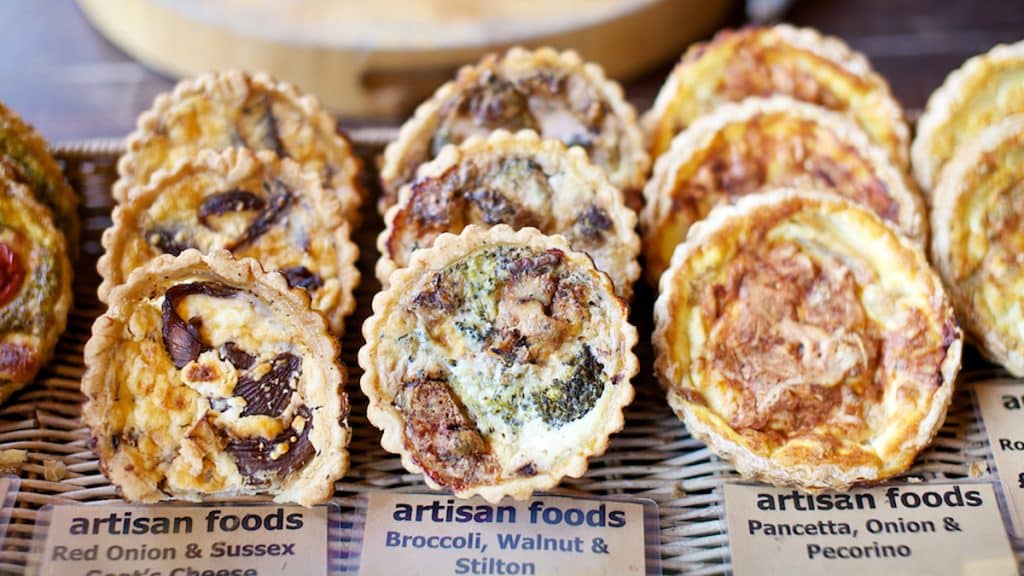
Cured meats
Another obvious must, and another Borough asset. There are French saucissons, rillettes and smoked or air-dried hams at The French Comte, Une Normande a Londres and Le Marché du Quartier. You’ll find hand-carved Spanish jamón at Brindisa. Most comprehensive of all is the Borough’s treasure trove of regional Italian cured meats, including salami sticks from the cool Tyrol mountains in the far north (Alpine Deli), soppressata from the heat of Calabria in the deep south (De Calabria), and the world-famous hams from the pig-packed landscape of Emilia-Romagna (Bianca Mora).
Fish
Slightly less obvious for a picnic, but far from unviable. Some of the smoked fish at Oak & Smoke, produced in Scotland using centuries-old methods, is ready to eat straight from the packet, while the tinned mussels from The Tinned Fish Market are among the most finger-friendly of the stall’s impressive array of high-quality canned seafood – no tin opener required!
Cheeses
Borough Market cheese is beautiful, abundant, but potentially problematic. Most soft cheeses are only good if you’ve had the foresight to bring a knife (or if you’re buying Blackwoods Cheese Company’s Graceburn or Jumi Cheese’s Formaggini cheese pots, both of which are bite-sized and conveniently jarred). Otherwise, go for one of the Market’s mind-boggling array of hard cheeses and ask the cheesemonger to cut them up for you: one of the beauties of being served by a real person.
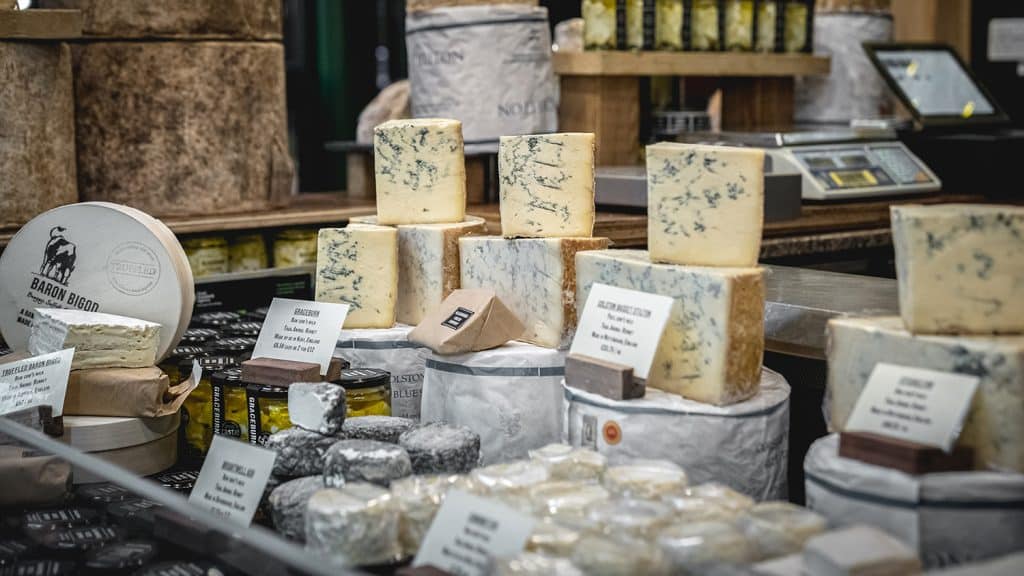
Breads
In the likely absence of a bread knife, you’ll need the kind of bread you can tear at with your hands: perhaps the sourdough baguettes from The Flour Station, slow-fermented ciabatta baps from Olivier’s Bakery, or challah rolls from Moishe’s Bagelry & Bakery – soft, fluffy and easy to break apart. Other good options for dipping or topping are the crackers from The Cinnamon Tree Bakery, all of them handmade in Camberwell, which include seeded flatbreads and rye and caraway flatbreads.
Antipasti & dips
Borough Olives has marinated olives from Europe and north Africa, with varieties including the Greek Volos, Italian nocellara and Spanish Aragón, as well as antipasti such as sundried tomatoes, marinated peppers and pickled garlic, and some amazingly meaty tapenade made from Greek Halkidiki olives. Also sourced from Greece – specifically Sparta – Oliveology’s olives are typically exceptional, and the same stand sells tzatziki and a Greek fava dip, both made in small batches in Bermondsey. Food & Forest’s roasted, salted, organic guara almonds sourced from farmers in Andalucia, Spain, are another must, as is the gorgeously umami mushroom pâté from Pâté Moi, which inspires cult-like devotion – for good reasons.
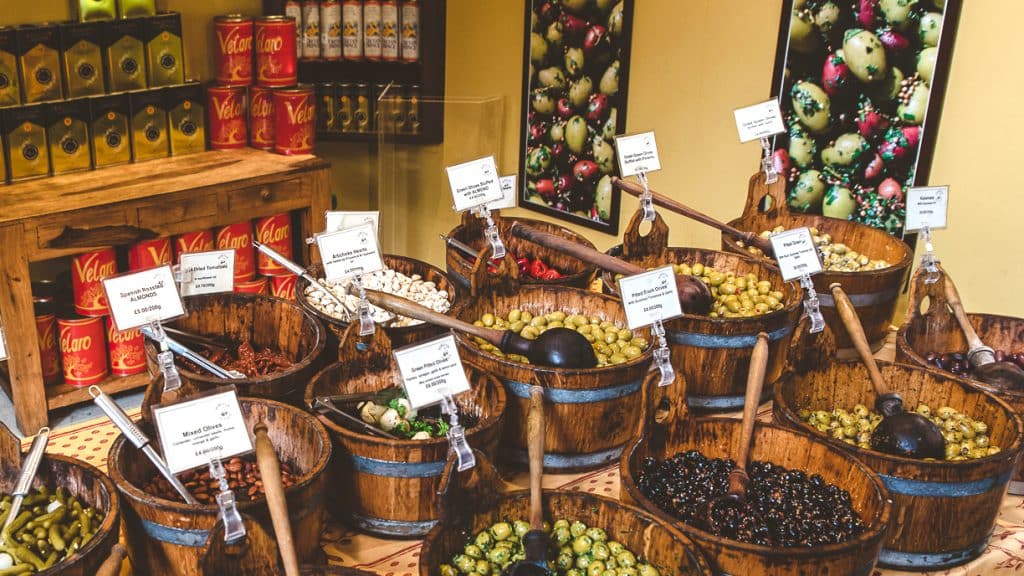
Sweets
To finish, treat yourself to some summer berries from Stark’s Fruiterers, with the size and sweetness of this year’s English strawberries expected to offer some small compensation for the cold, wet spring that lengthened their growing time. Other good-to-share sweets that require no slicing include the delicate macarons from Comptoir Gourmand and the vast array of traditionally made Turkish delight available at The Turkish Deli.
Drinks
Two requirements here: cold and refreshing. A couple of standout options are Raya’s cold-pressed sugarcane juice, flavoured with lime and ginger, and bottles of Effervé Citron from The French Comte – a classic sparkling lemonade produced in Alsace. And if your spontaneous picnic is on a day when some gentle alcohol consumption is viable, try The London Cider House’s cider slush.
Where to take your picnic
Despite its urban location, the Market has plenty of attractive green space with a few minutes’ walk. Red Cross Garden, a beautiful hidden garden off Redcross Way, offers a pond, a rose arbour and some rich history – it was opened in 1888 as part of a social housing project run by Octavia Hill, the great 19th century reformer and one of the founders of The National Trust. Like Red Cross Garden, the much larger Mint Street Park on Marshalsea Road is beautifully maintained by volunteers from Bankside Open Spaces Trust, a local environmental charity. Over towards Bermondsey, Leathermarket Gardens on Weston Street is attractively landscaped. For impressive views, Tate Modern Gardens offers the twin attractions of St Paul’s Cathedral and the world-famous art gallery, while Potters Field Park enjoys the looming presence of Tower Bridge.
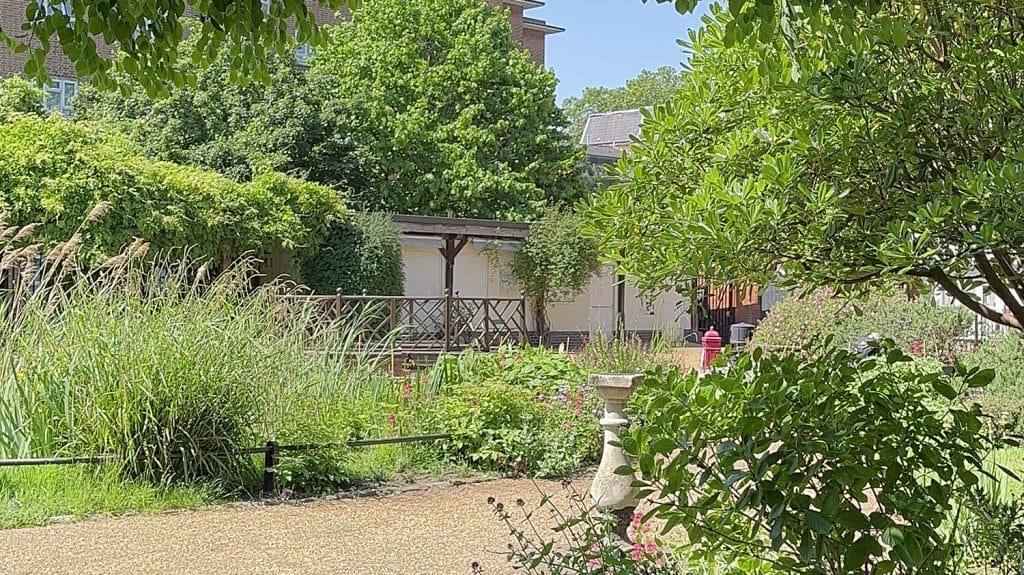
Head to our Instagram to enjoy reels of the Market’s picnic food, as well as some of the nearby green spaces.
Happy hours
Why the charitable trust that runs Borough Market has been accredited as a Living Hours Employer
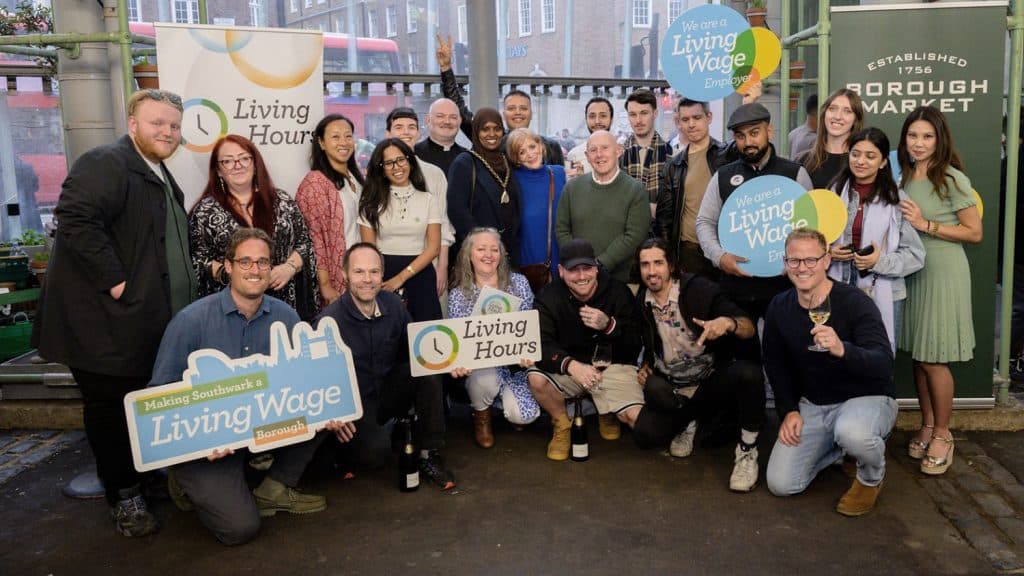

“OUR PEOPLE HAVE A RIGHT TO KNOW HOW MANY HOURS THEY’RE GOING TO WORK, AND WHEN THEY’RE GOING TO WORK THEM”
It was all the way back in 2016 that Borough Market first became an accredited Living Wage Employer. For the past eight years, we’ve been committed to paying every member of our team more than the hourly wage set each year by the Living Wage Foundation – a charitable organisation that helps employers set a level of pay that meets their people’s essential needs. Rates are updated each year to cover the cost not just of paying rent and buying food but of living a happy and fulfilling life, including simple pleasures as well as absolute necessities.
Since then, dozens of the independent businesses that trade here (25 at the last count, and the number continues to grow) have joined us in gaining Living Wage accreditation of their own. Ultimately, our aspiration is that everyone working in the Market, not just our own staff, will be able to enjoy the sense of security provided by this hugely meaningful commitment.

For us, doing this has always seemed a complete no-brainer. Borough Market is run by a charitable trust whose stated purpose is to serve the community. The amazing people who staff the Market, keeping it clean, safe and secure, supportive of our traders and welcoming for the millions of visitors who pass through each year, are a fundamental part of that community. So, it’s incumbent upon us to make sure that their needs are being served along with everyone else’s. That means paying them properly, with absolutely no exceptions, and giving them the comfort of knowing that their pay will keep pace with the cost of living, at the very least.
But what we’ve come to understand is that paying a fair hourly rate is not nearly enough. We believe that our people also have a right to know how many hours they’re going to work, and when they’re going to work them. Only then can they feel truly secure in their jobs and have the certainty they need to organise their lives and make plans for the future. That’s why we decided this year to become an accredited Living Hours Employer, alongside our continuing commitment to the living wage.
This accreditation – also overseen by the Living Wage Foundation – requires us to provide all staff with a guaranteed minimum of 16 hours a week (if they want it), a proper contract that accurately reflects the hours they’re expected to work, and at least four weeks’ notice of their shift patterns, with guaranteed payments made if shifts are cancelled at short notice.
The main reason we’ve done this is that the ethics are, we believe, impossible to refute – but it’s not just the people who directly benefit from this policy who will see a positive result. The whole Borough Market community is set to prosper. An organisation can only be truly effective if all its employees feel happy, valued and free from the worst financial pressures. And if we want to attract the best possible candidates whenever vacancies arise, making a clear, tangible statement to the world that we care about and look after our staff does no harm at all. The Borough Market trust wins, the staff win, and the public who depend so much on their hard work and diligence – they win too.

